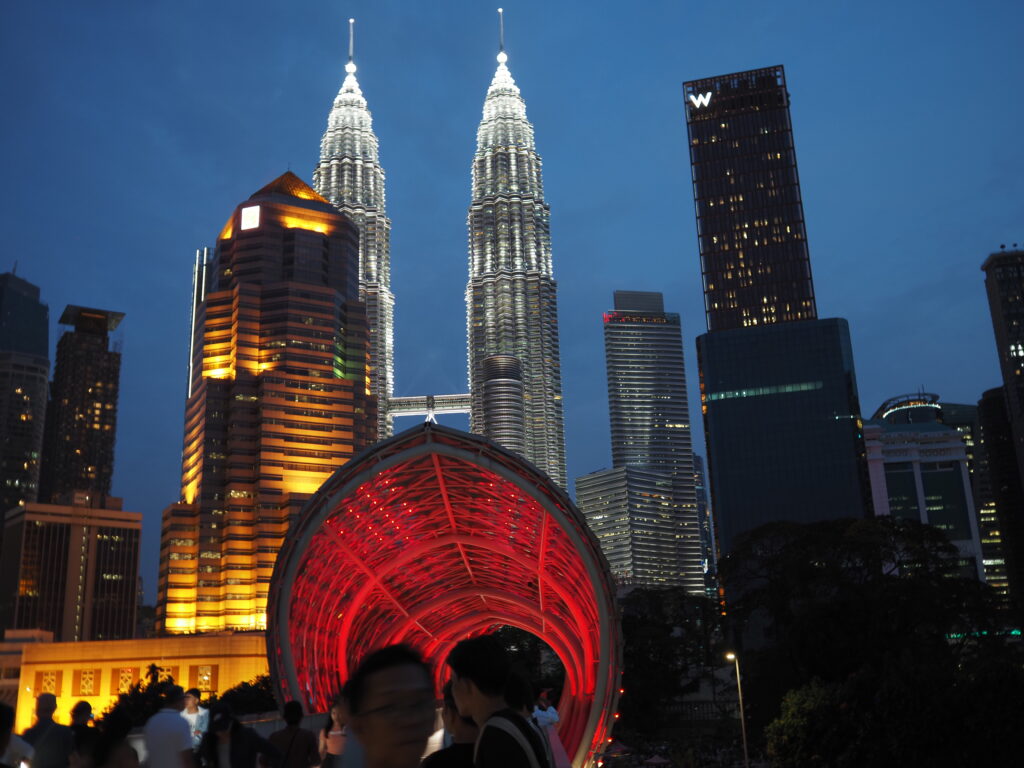
We were startled in 1996 when we learned that the tallest building in the world was now a pair of 88 story (1483’) towers in Malaysia. The Petronas Towers retained that title until 2004 and remain the world’s tallest twin towers. Photos at the time made it seem as if they had been built in the middle of a field. However, they now simply blend into the skyline and are overshadowed by even taller buildings in Kuala Lumpur (aka KL), a decidedly modern and prosperous city that we greatly enjoyed.
Malaysia is a complicated country with a complicated history fundamentally transformed by the needs of its colonial occupier, Great Britain, that brought Chinese to work their tin mines and Indians (primarily from Tamil Nadu) to work their palm oil plantations, both Indians and Chinese remaining substantial minorities in this Muslim country dominated politically by Malays. Adding to the complexity, there are also substantial numbers of so-called Straights Chinese or Peranaken Chinese who came early as traders and intermarried with Malays prior to the beginning of the Islamic era in Malaysia (and whose first language is often English).
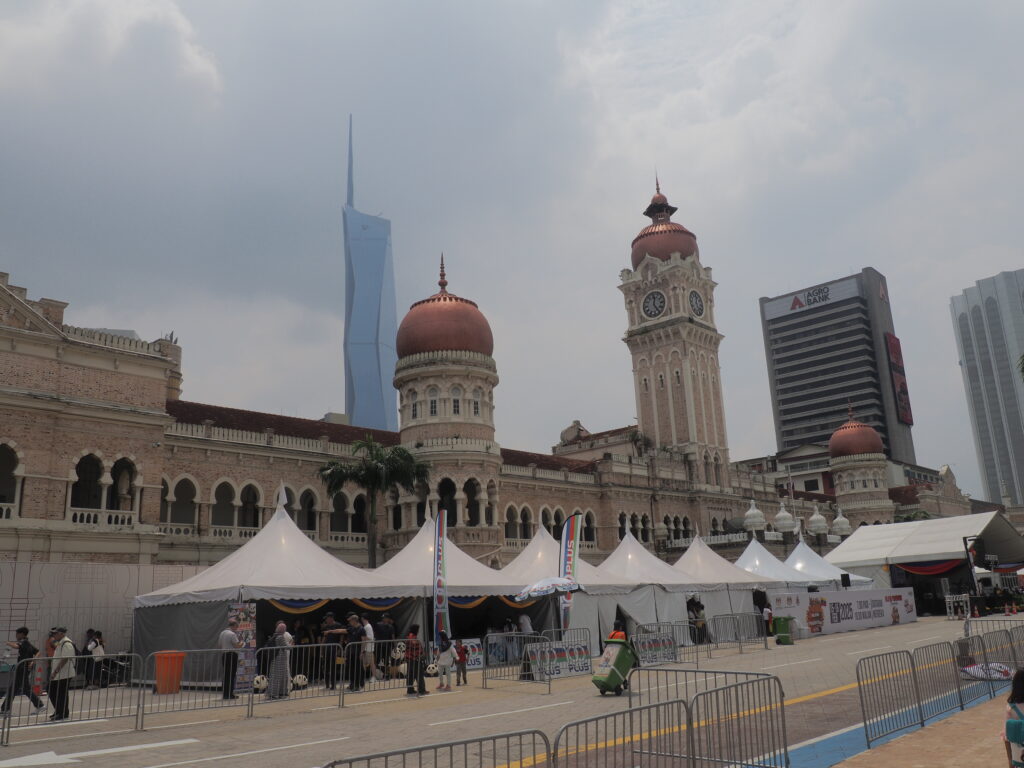
The current tallest building in KL is, by the way, Merdeka 118, shown here looming behind a prominent colonial era building, “Merdeka” meaning “independence,” and 118 referring to the number of floors. It’s currently the second tallest in the world. There is some debate as to whether the pinnacle reaching above the building should be counted in the contest for altitude, although the architect counters that it is integral to the design of the building because it represents the upstretched hand of the first prime minister in an iconic photograph taken as he declared independence in 1957. The tents, by the way, were part of the setup for a marathon the following day.
sri maha mariamman
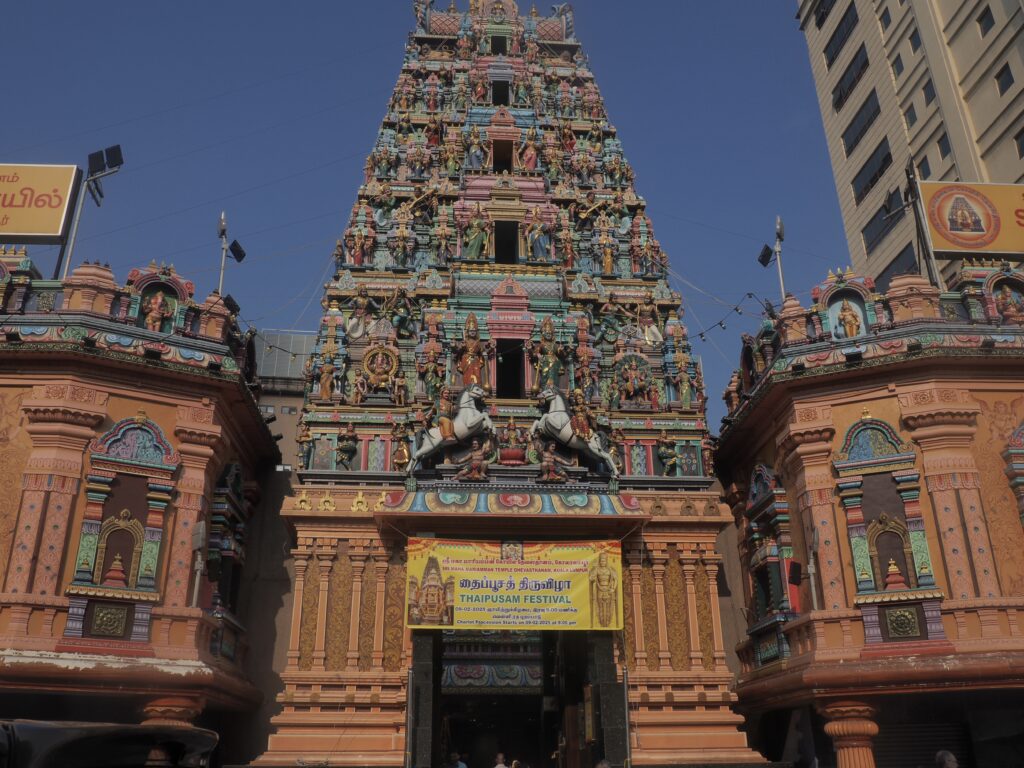
On the edge of Chinatown, the oldest (and reputedly the wealthiest) Hindu temple in Malaysia began as a private shrine for the Pillai family in 1873, was transferred to community control in the 1920’s, then underwent various demolitions and reconstructions through 1972. As with most religious buildings in Asia, shoes are left outside.
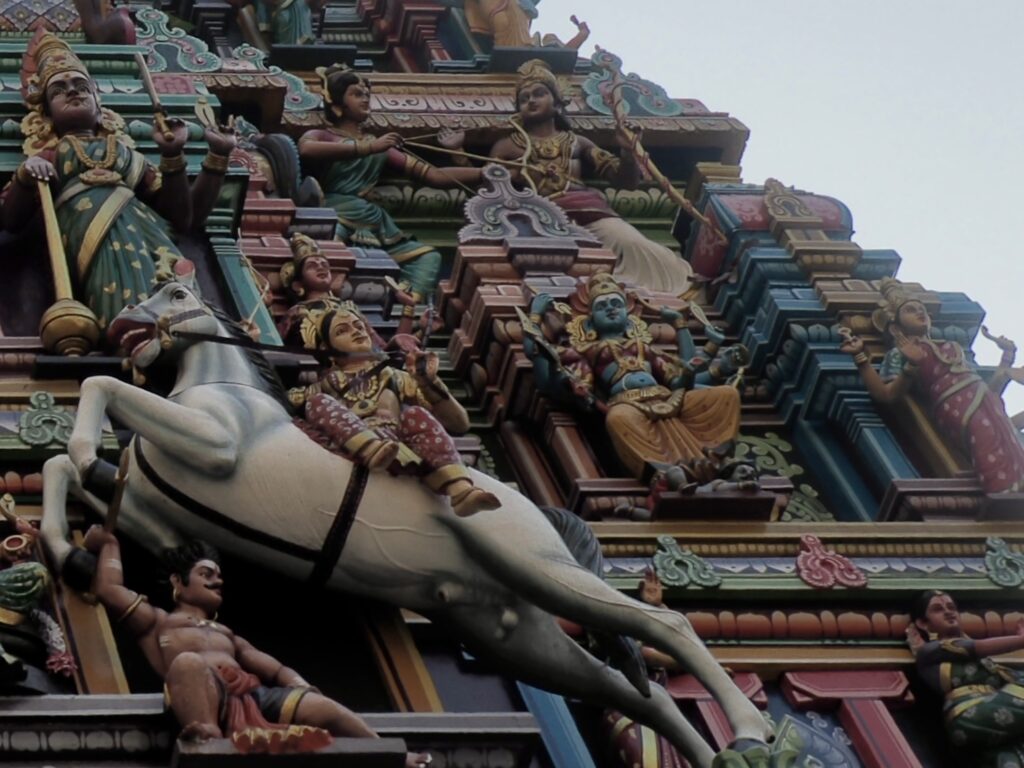
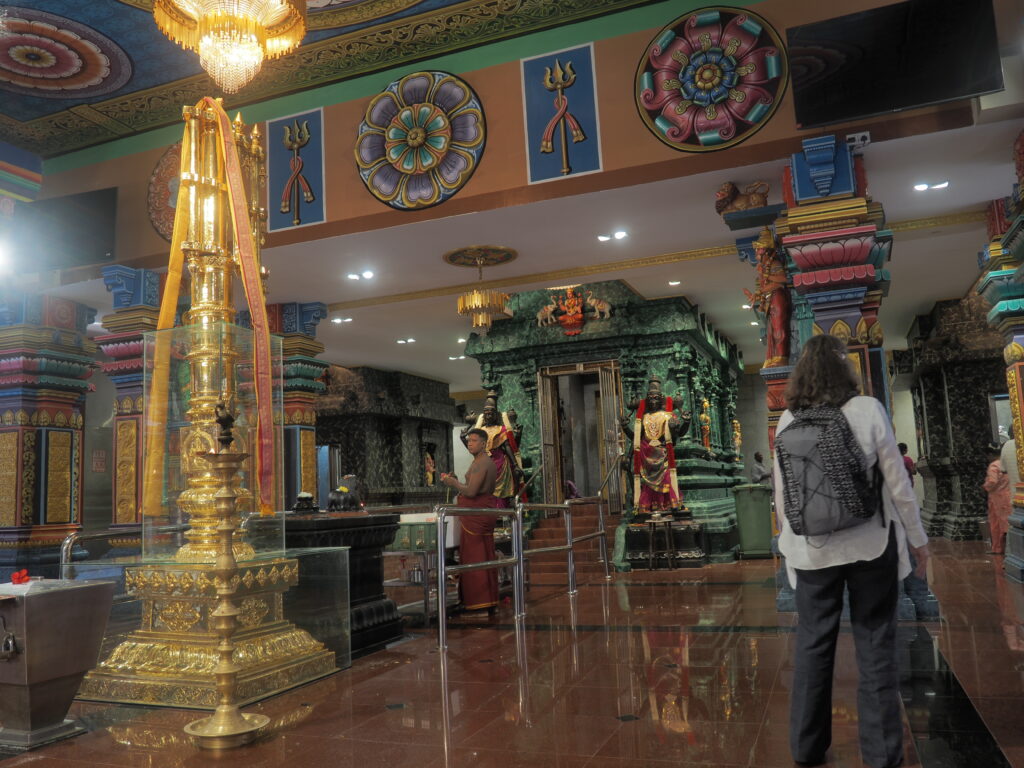
Hindu temples function as a gate between the heavenly and earthly realms, as well as the literal homes of living deities in the form of a murti or sacred image. Although there is no ritual obligation to visit a temple and the temple does not provide a congregational experience, worshippers come to see and be seen by the murti and be blessed by that experience. The central enclosure here houses the primary deity, Mariamman, a manifestation of Parvati who protects devotees from unholy or demonic events and is popular with overseas Indians.



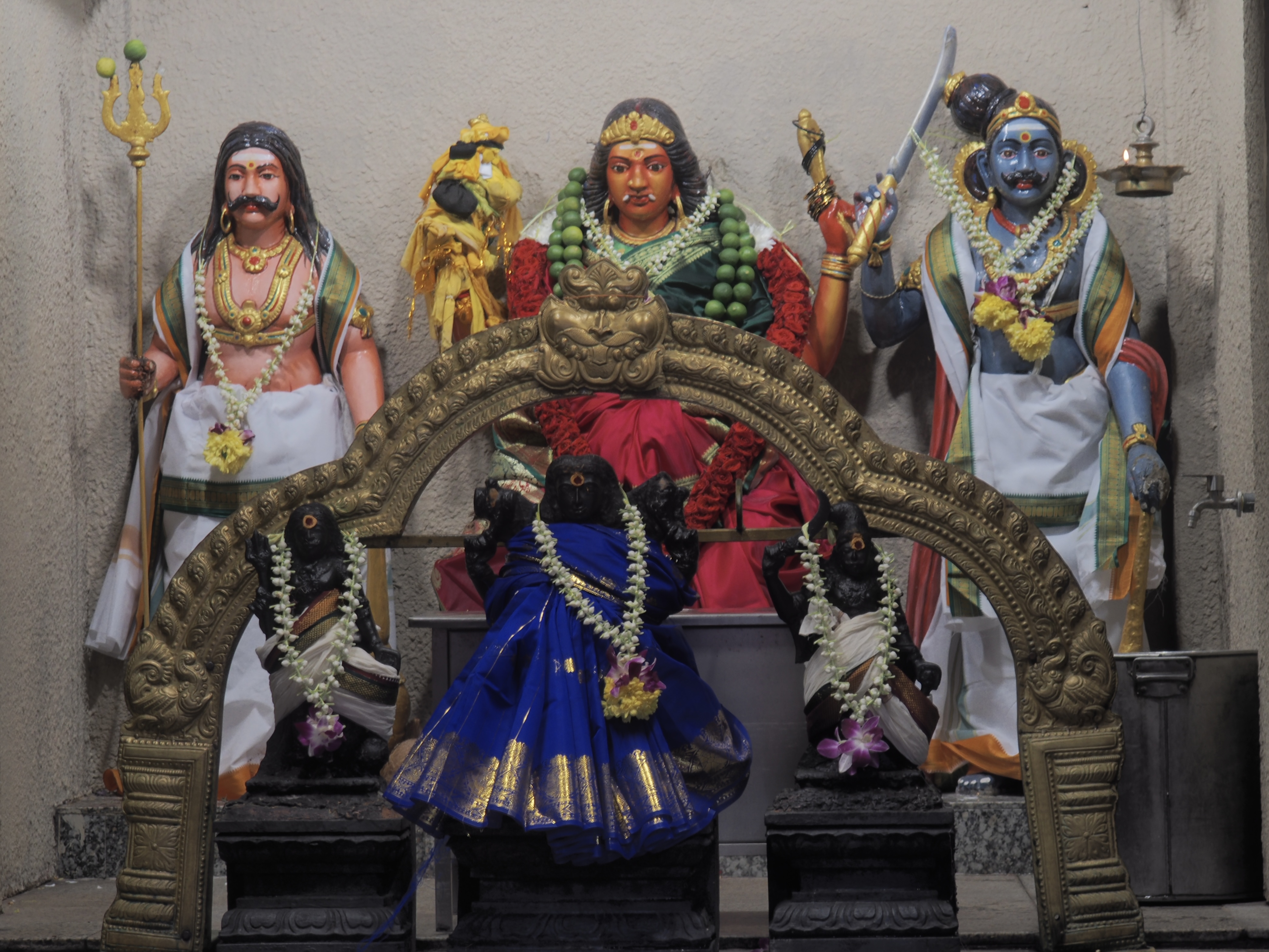

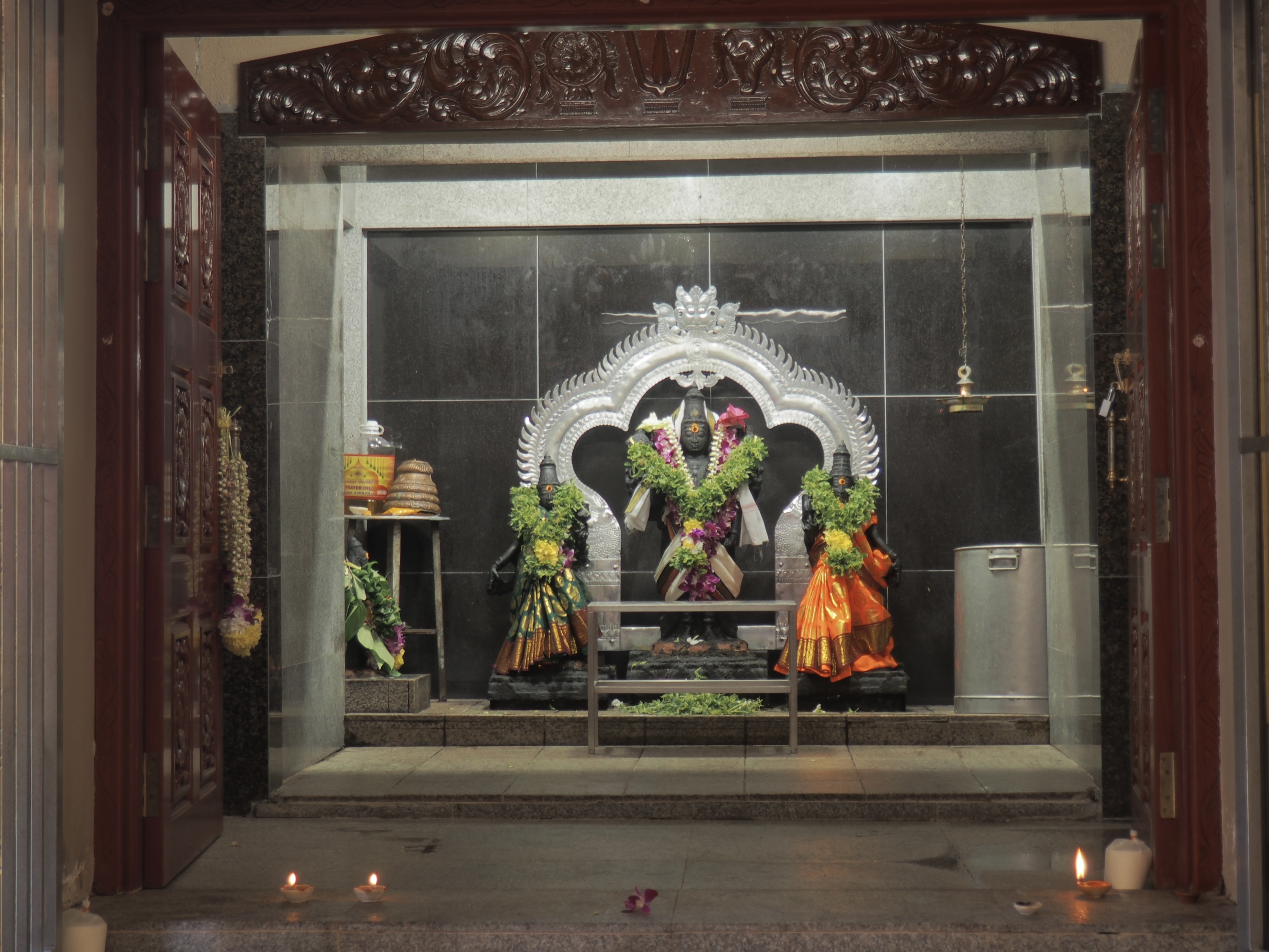


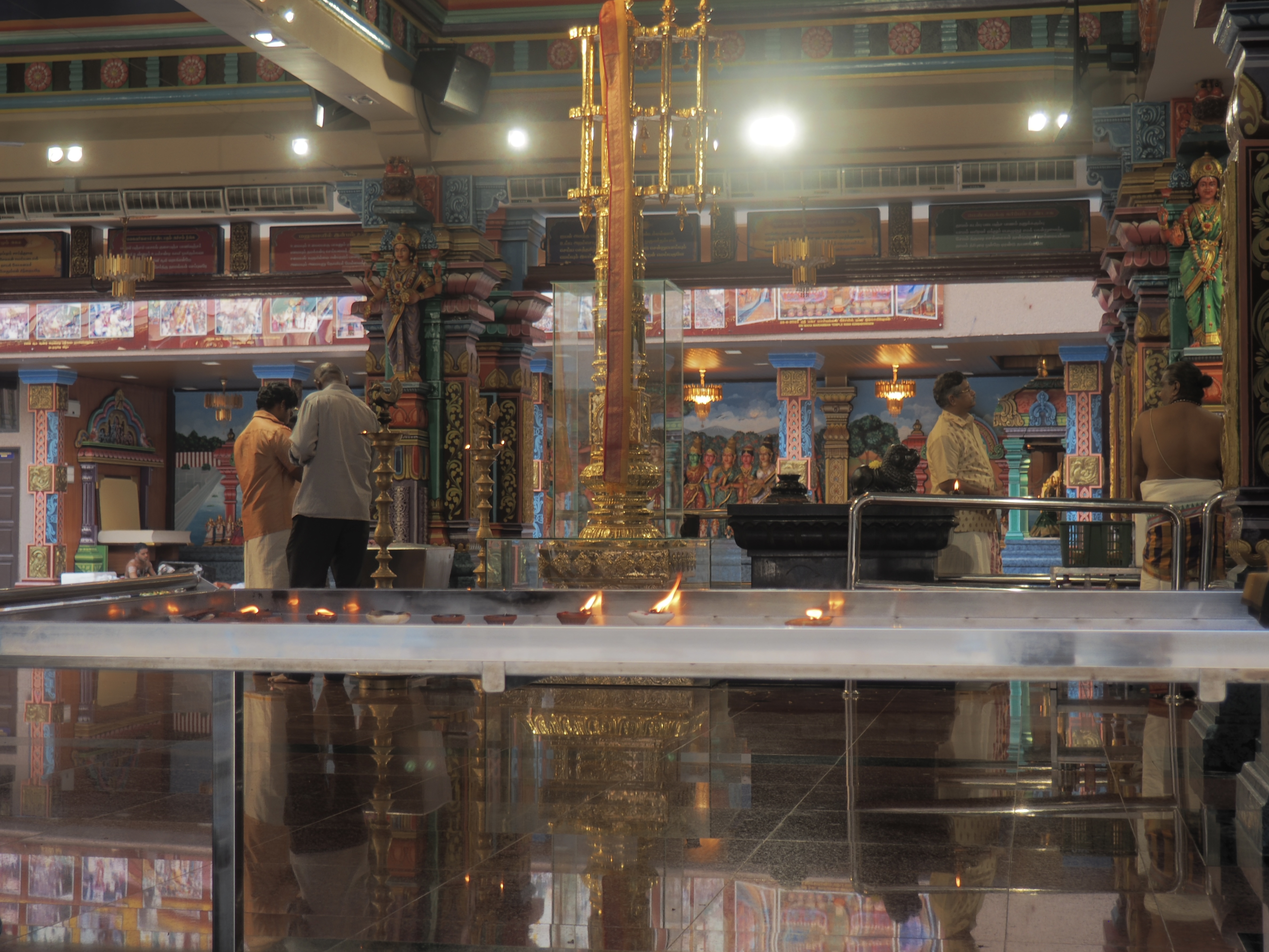



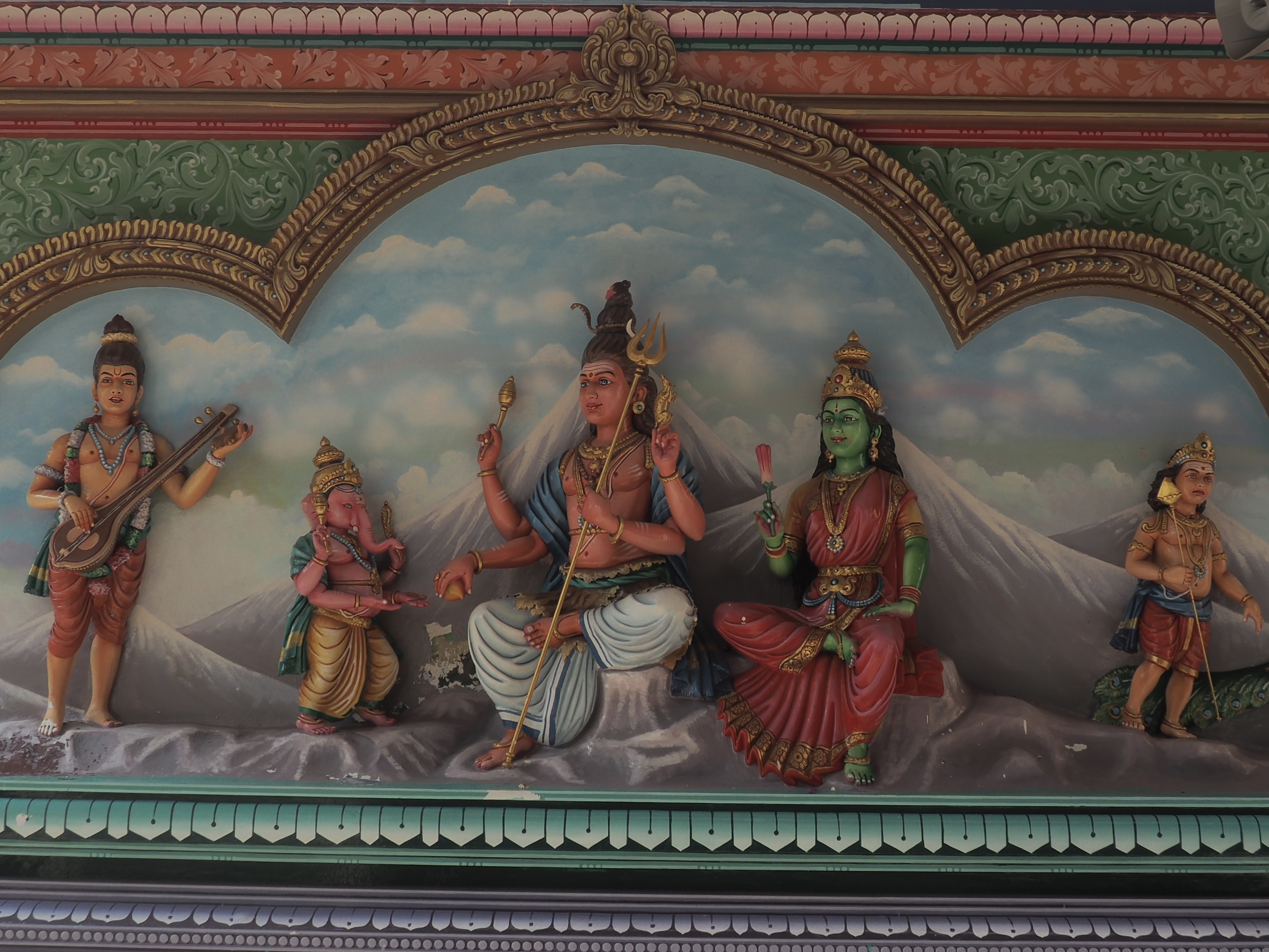
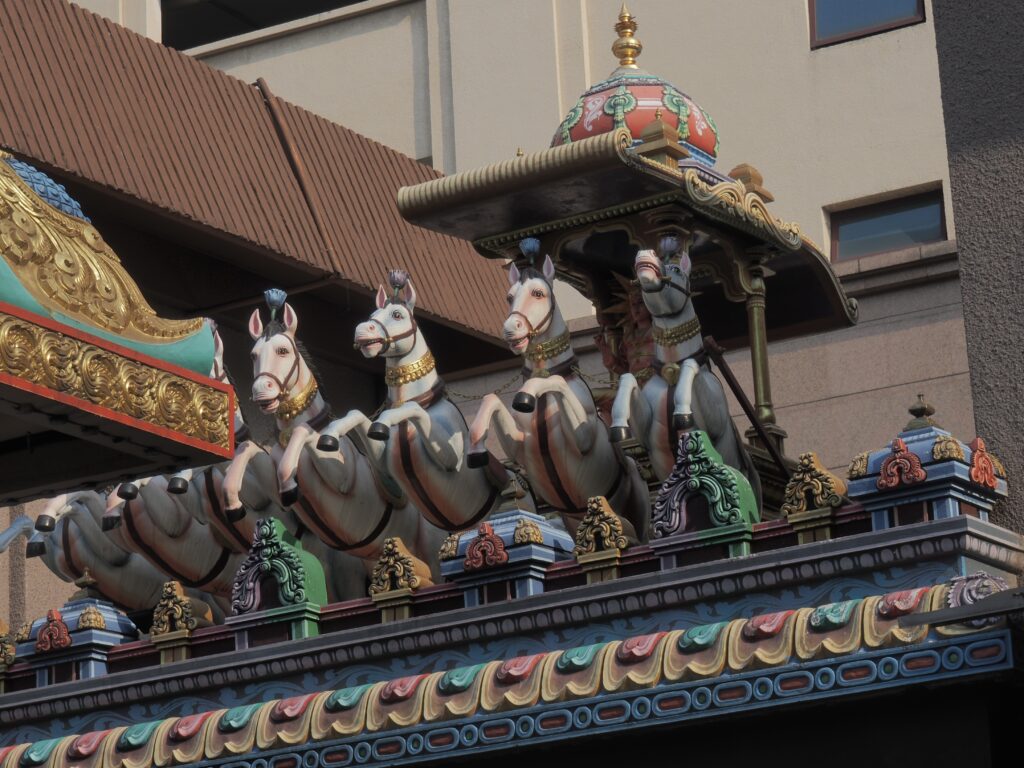
The temple also, by the way, houses a silver chariot (obviously, not this one) that is used during a festival to transport a statuette of Lord Maruga (god of war) to Batu Caves (see, below).
chan see shu yuen clan house
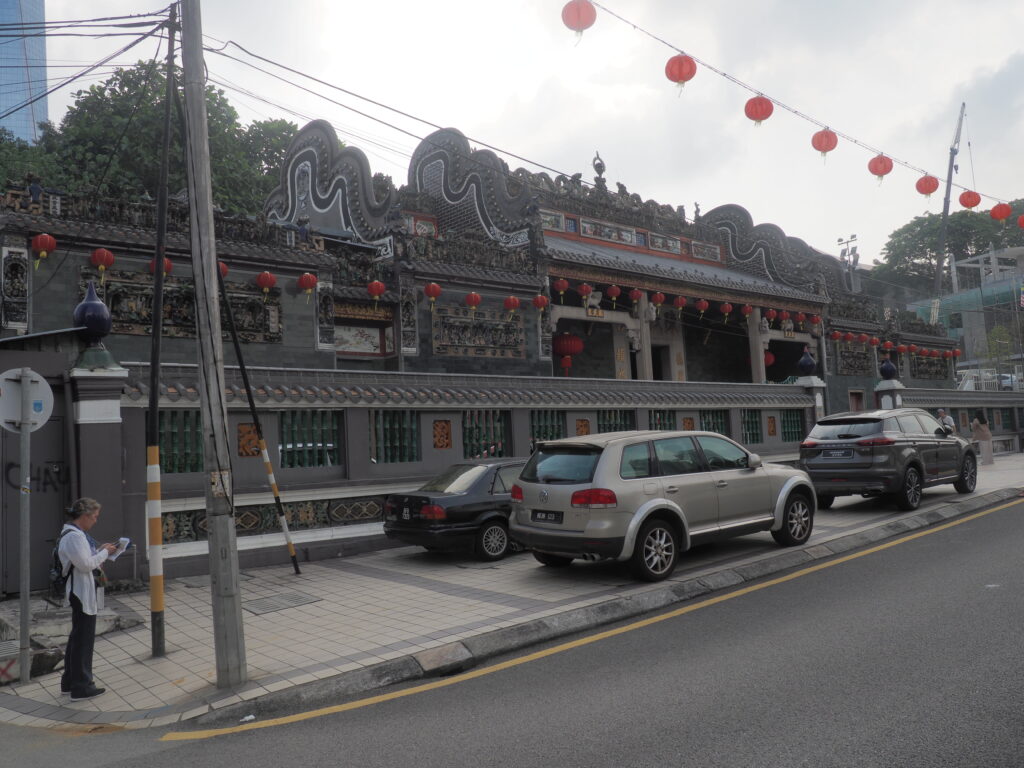
The Clan House got its start in 1894 when a wealthy businessman and philanthropist was invited to the opening of a clan house in Guangzhou, loved the idea and organized the effort to establish one in Kuala Lumpur. It’s not a temple, but more of a community center and educational academy for the extended Chan clan, which includes surnames such as Chen, Tan, Chin, Ting, and Tang.
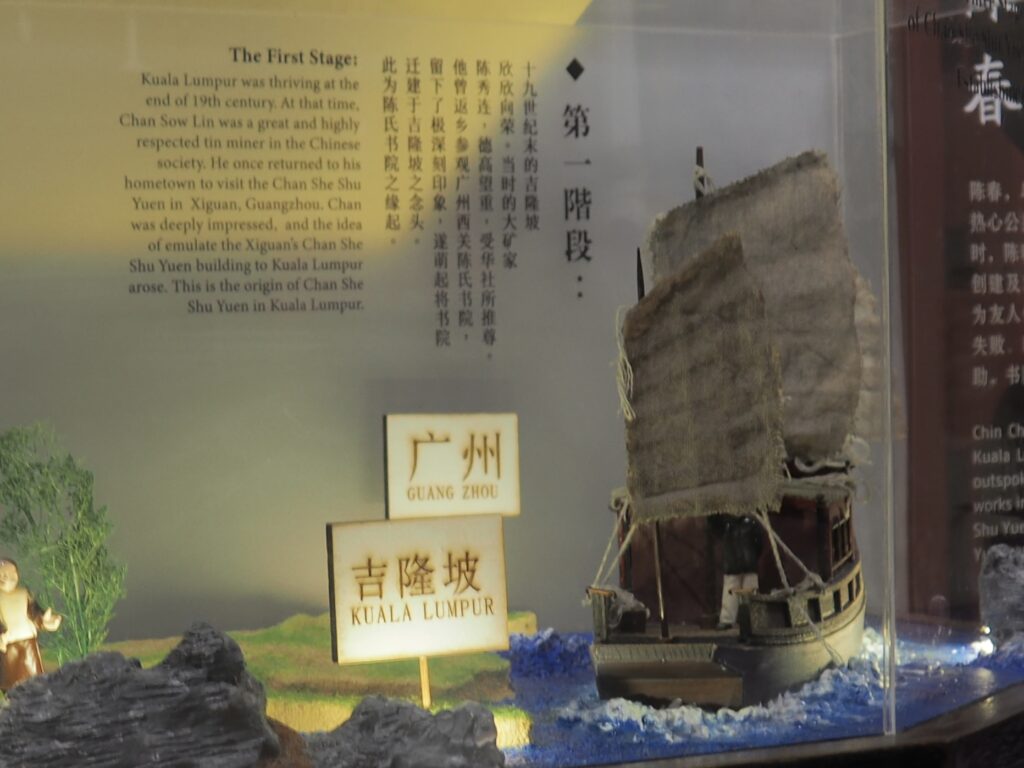
There’s a clear educational component.
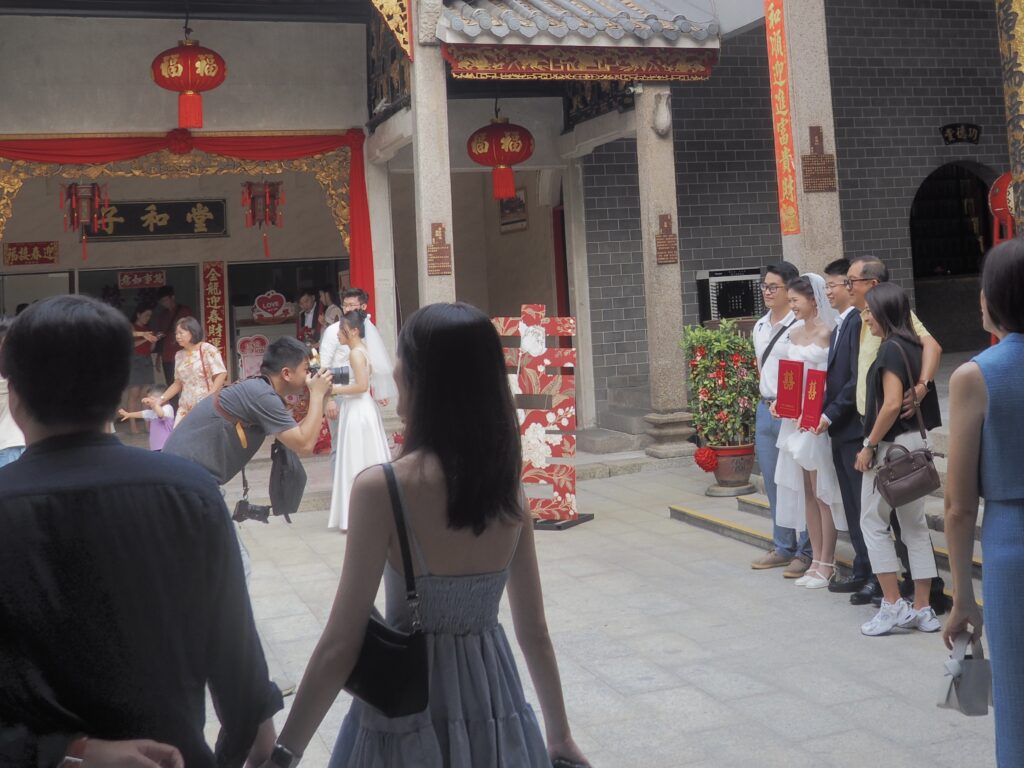
But, it’s all about family, kinship . . .


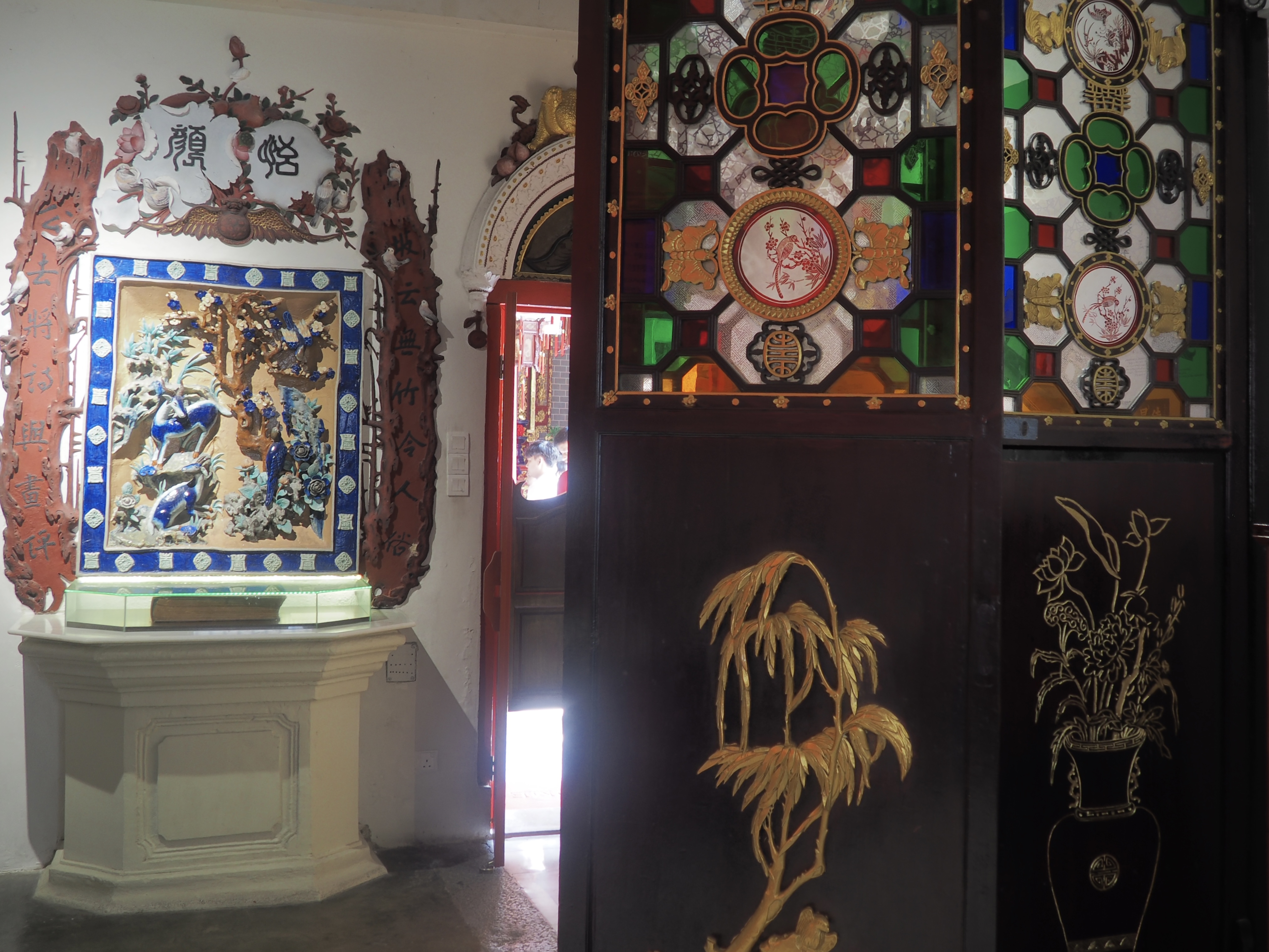
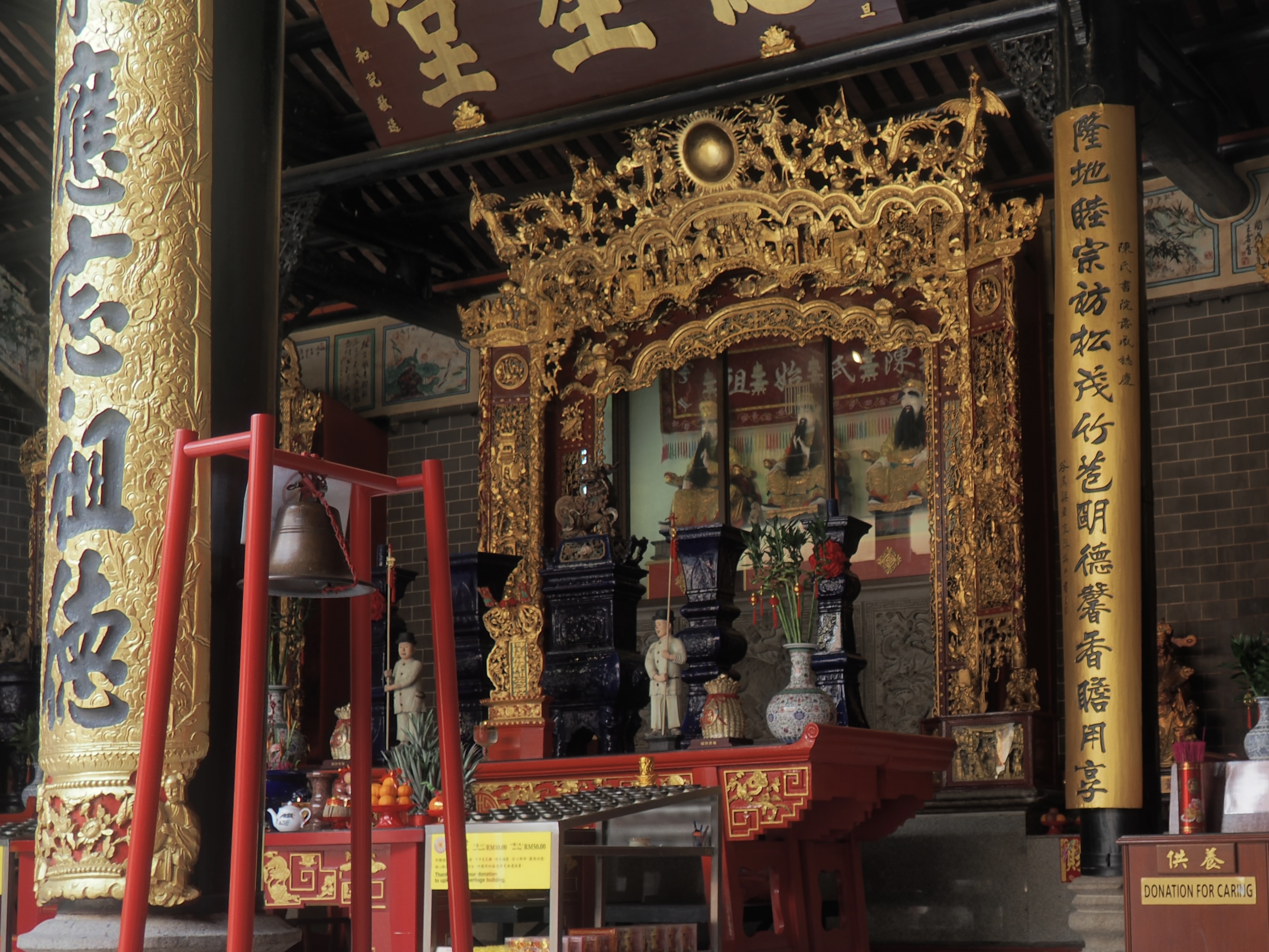


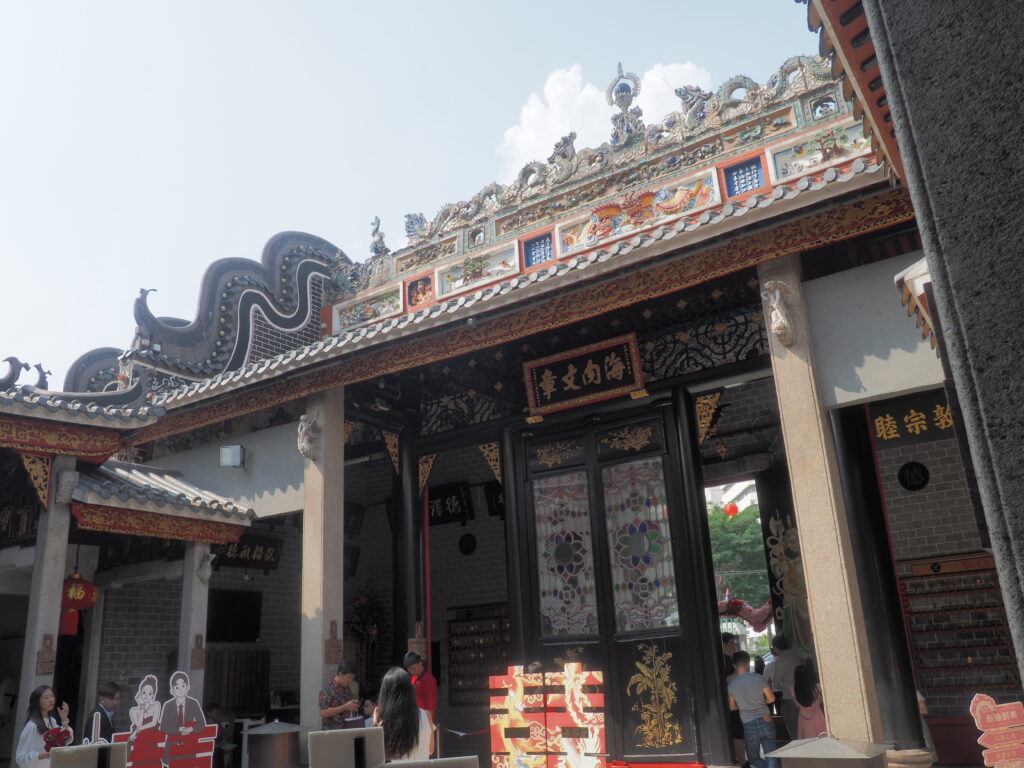
. . . and lineage.
sin sze si yah temple
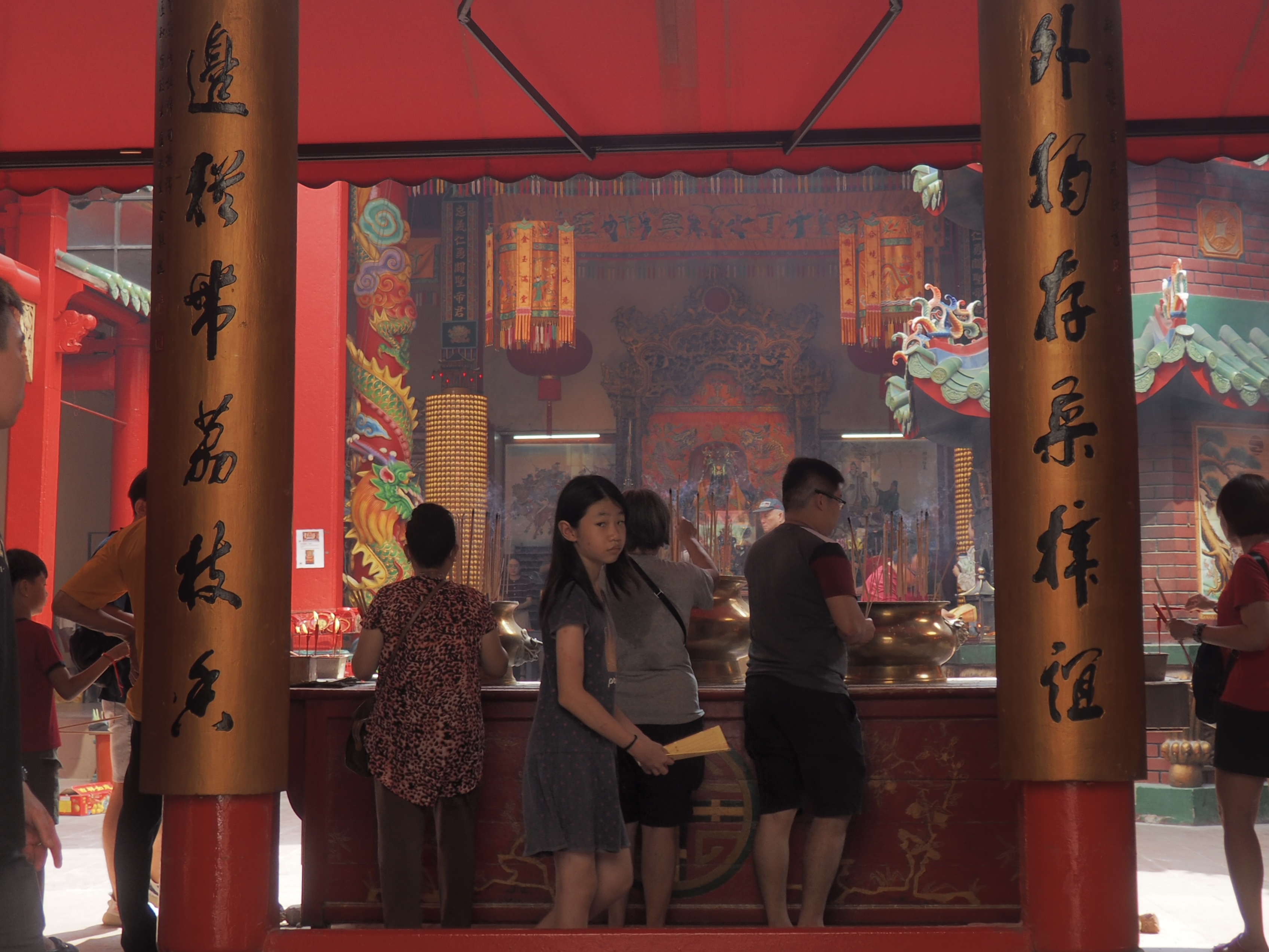
Founded in 1864 by Kapitan Yap Ah Loy, but constructed 20 years later and dedicated to patron deities believed to have helped him defend Kuala Lumpur during the Selangor Civil War, this is the oldest Taoist temple in the city. [Taoism is, of course, not a kind of Buddhism, but a completely different religion founded at about the same time in China, whereas Buddhism was founded in India. To us, it’s much easier to understand the differences between their belief systems than the differences in the temples. (And, for the curious, “Kapitan” is a title from the Dutch colonial days.)]



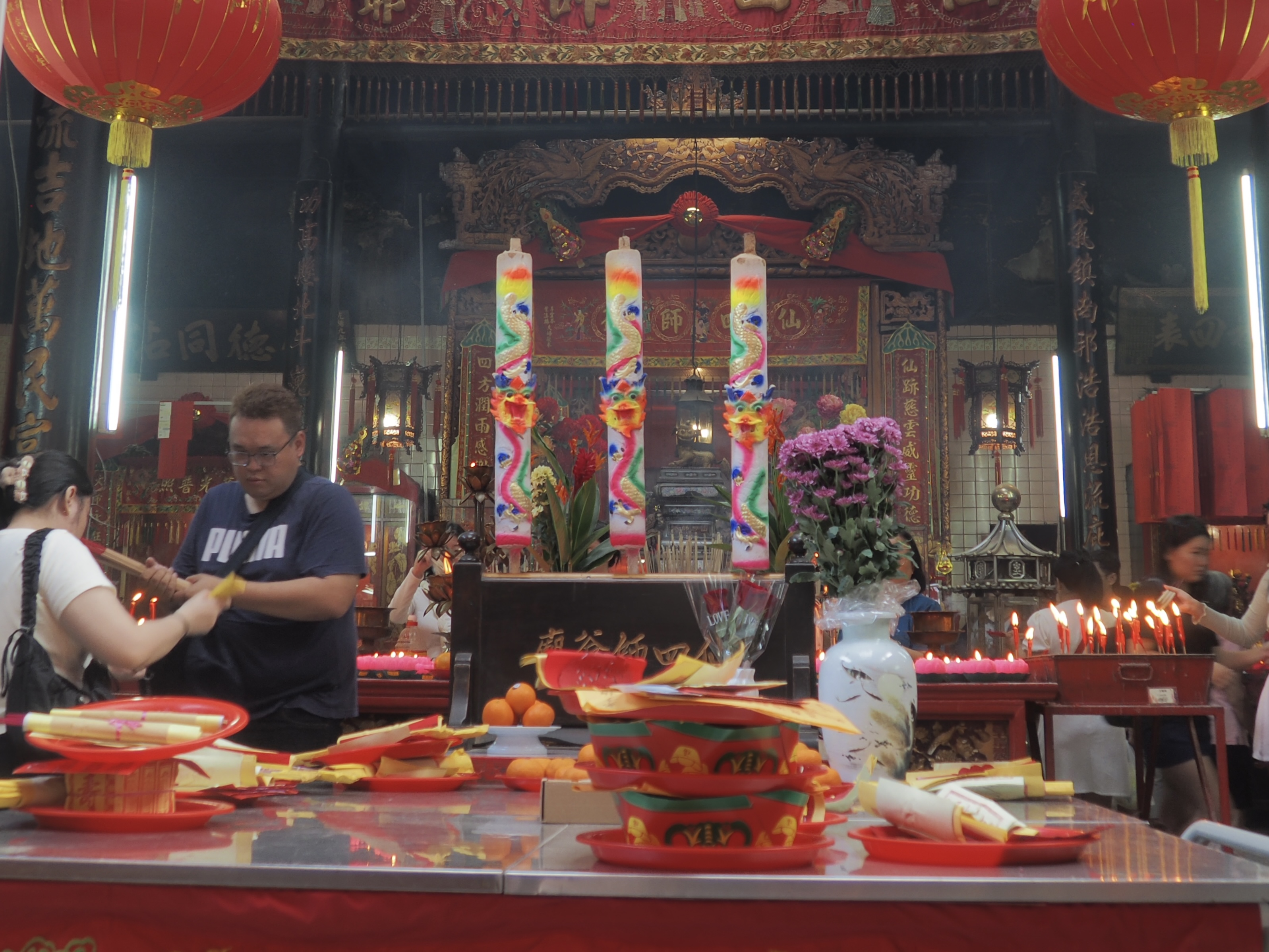


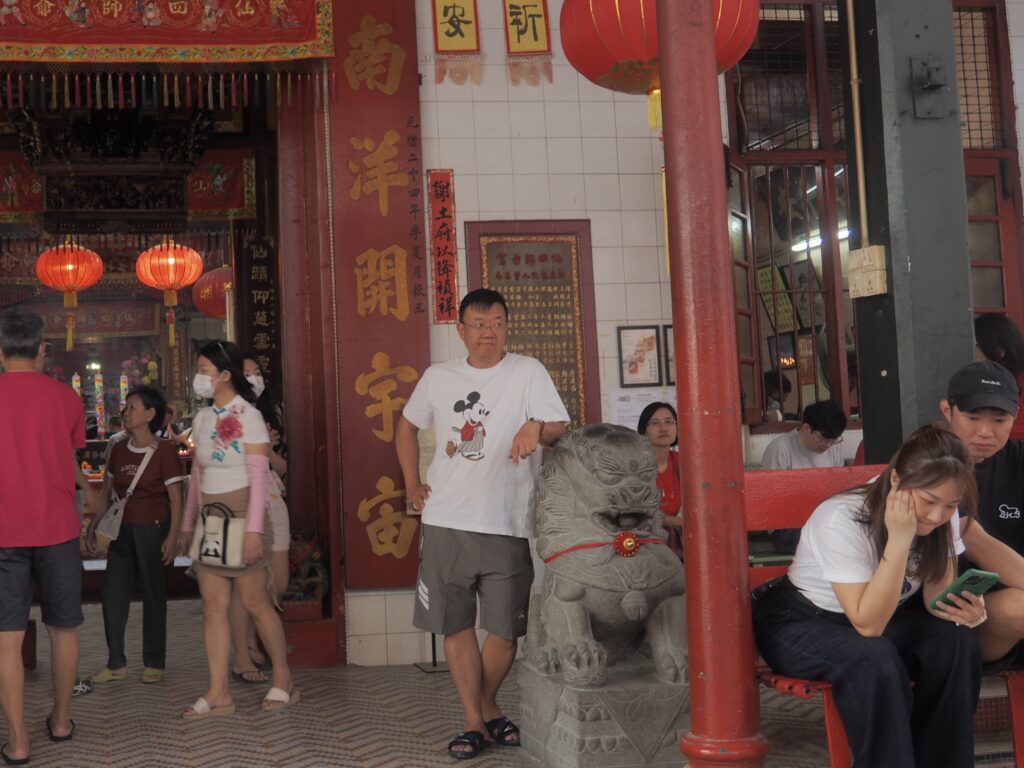
chinatown and petaling street





Time to jump into Chinatown and Petaling Street to see the markets, shophouses, and some street art.











Sultan Abdul Samad Jamek Mosque
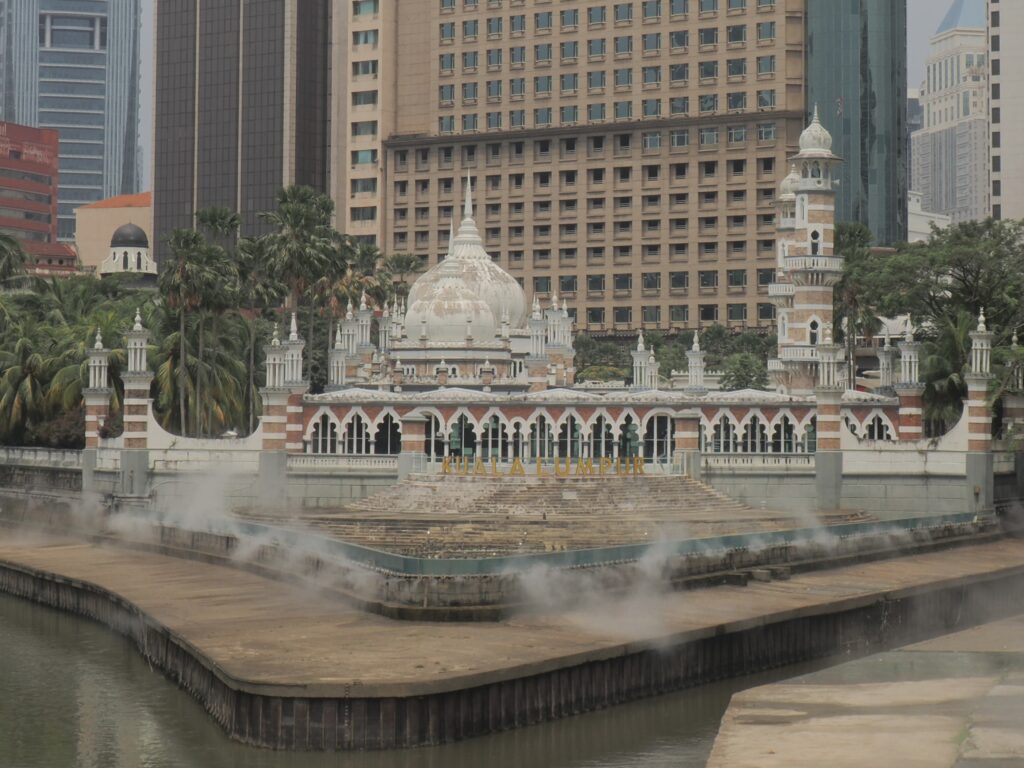
The Jamek Mosque was designed by a British architect, funded by the Malay community with a contribution from the colonial government, and officially opened by the Sultan of Selangor in 1909 on the site of an old Malay burial ground at the confluence of the Klang and Gombak rivers where the city was reputedly founded.
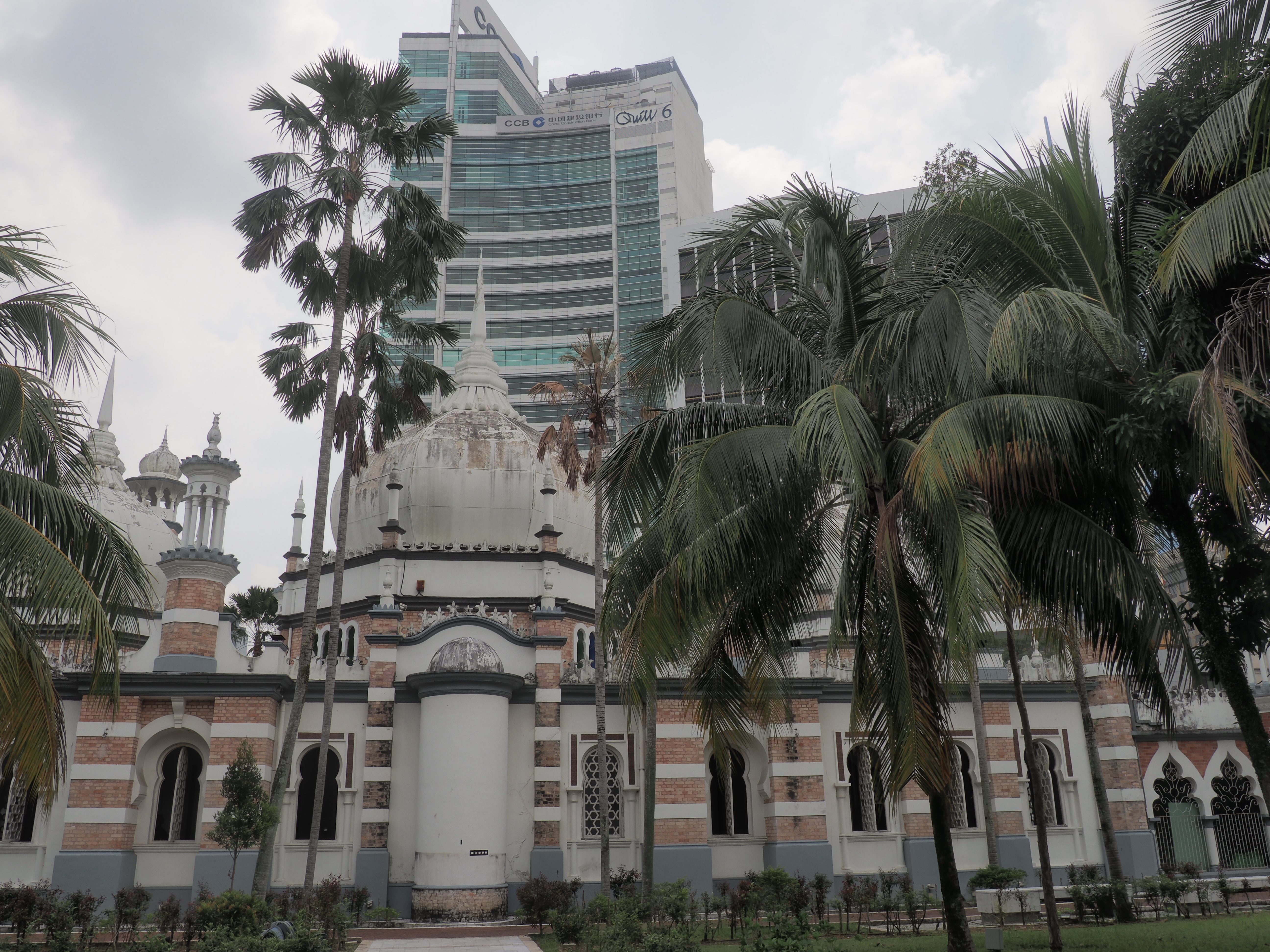
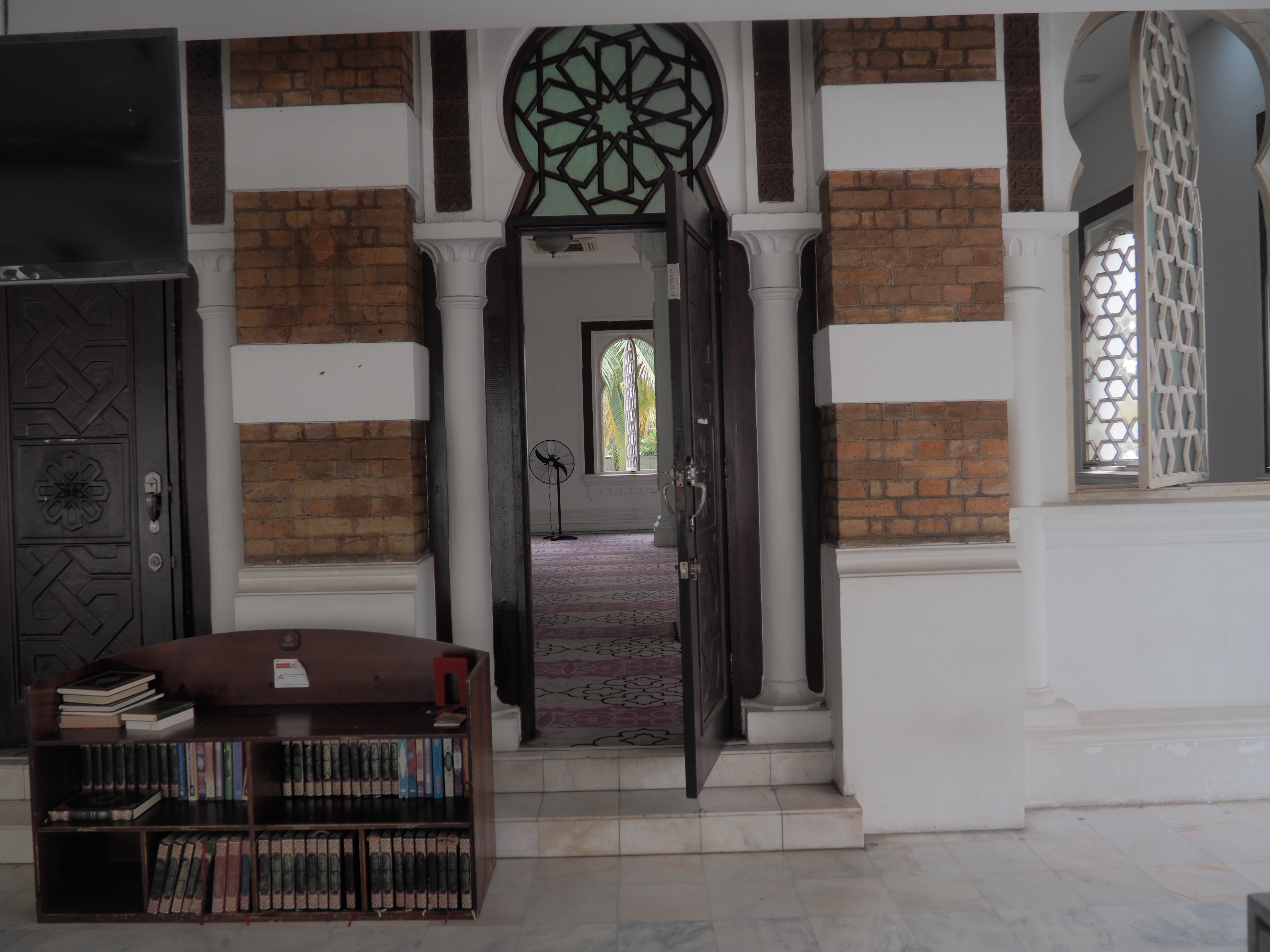
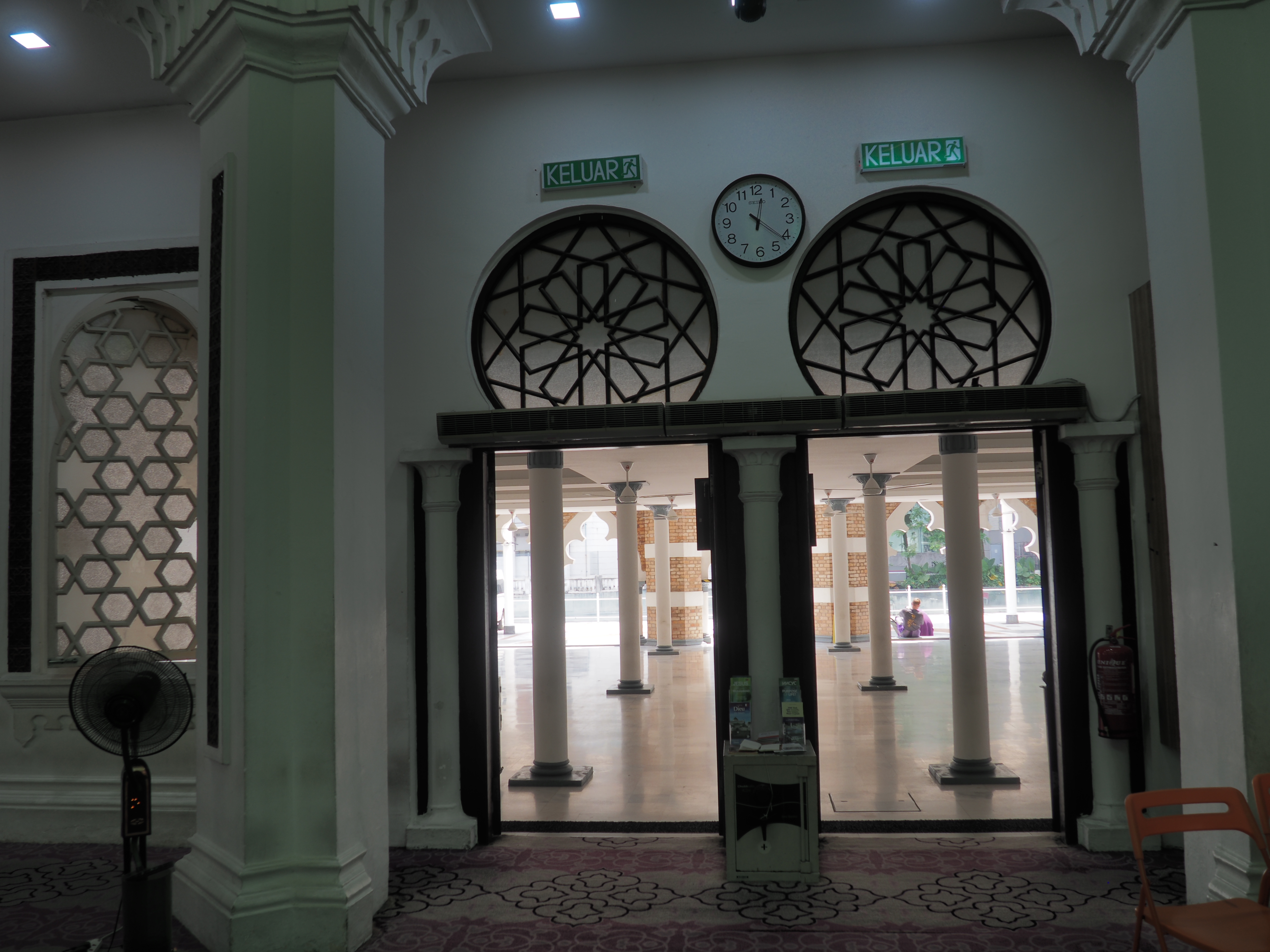
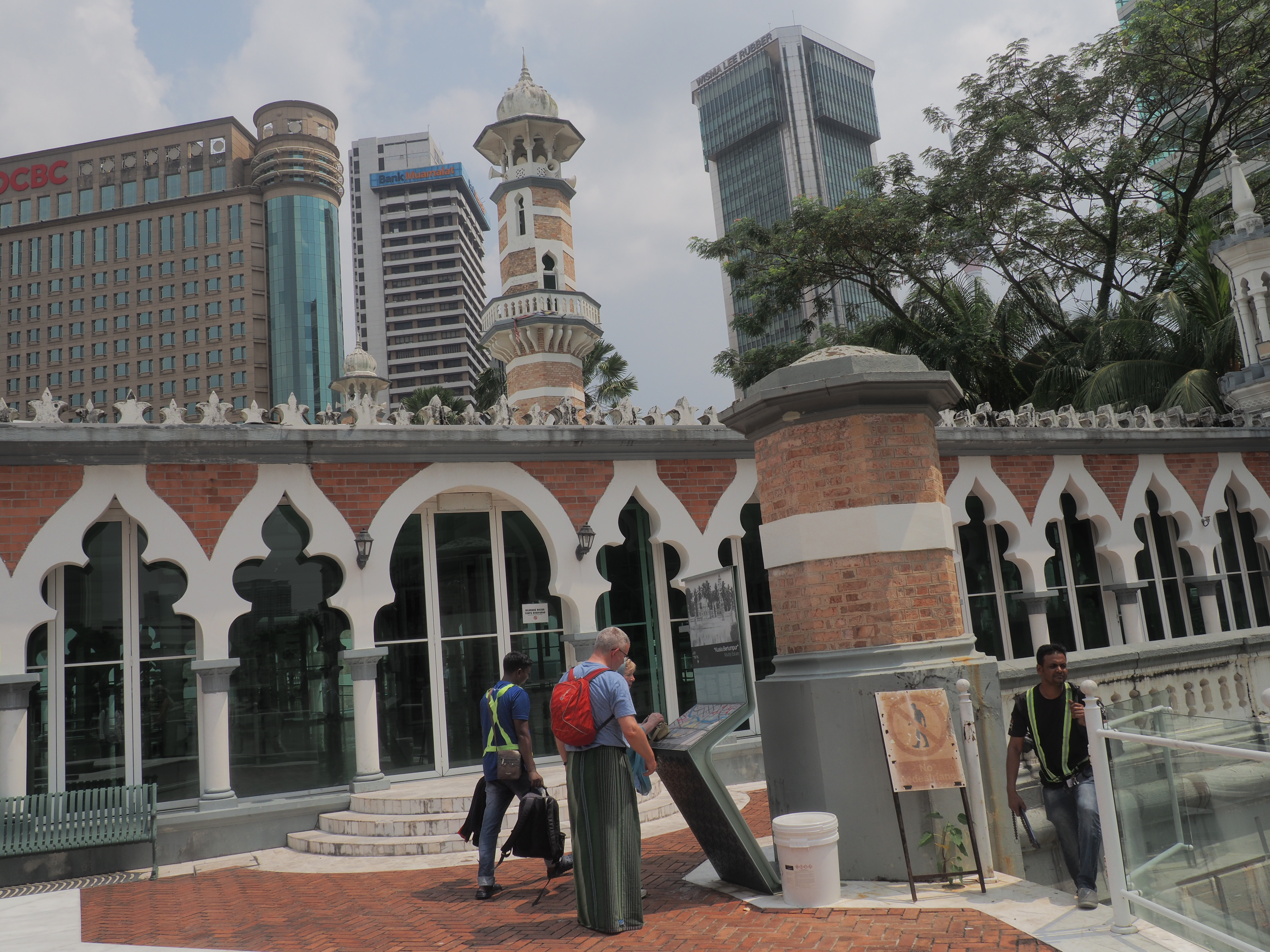
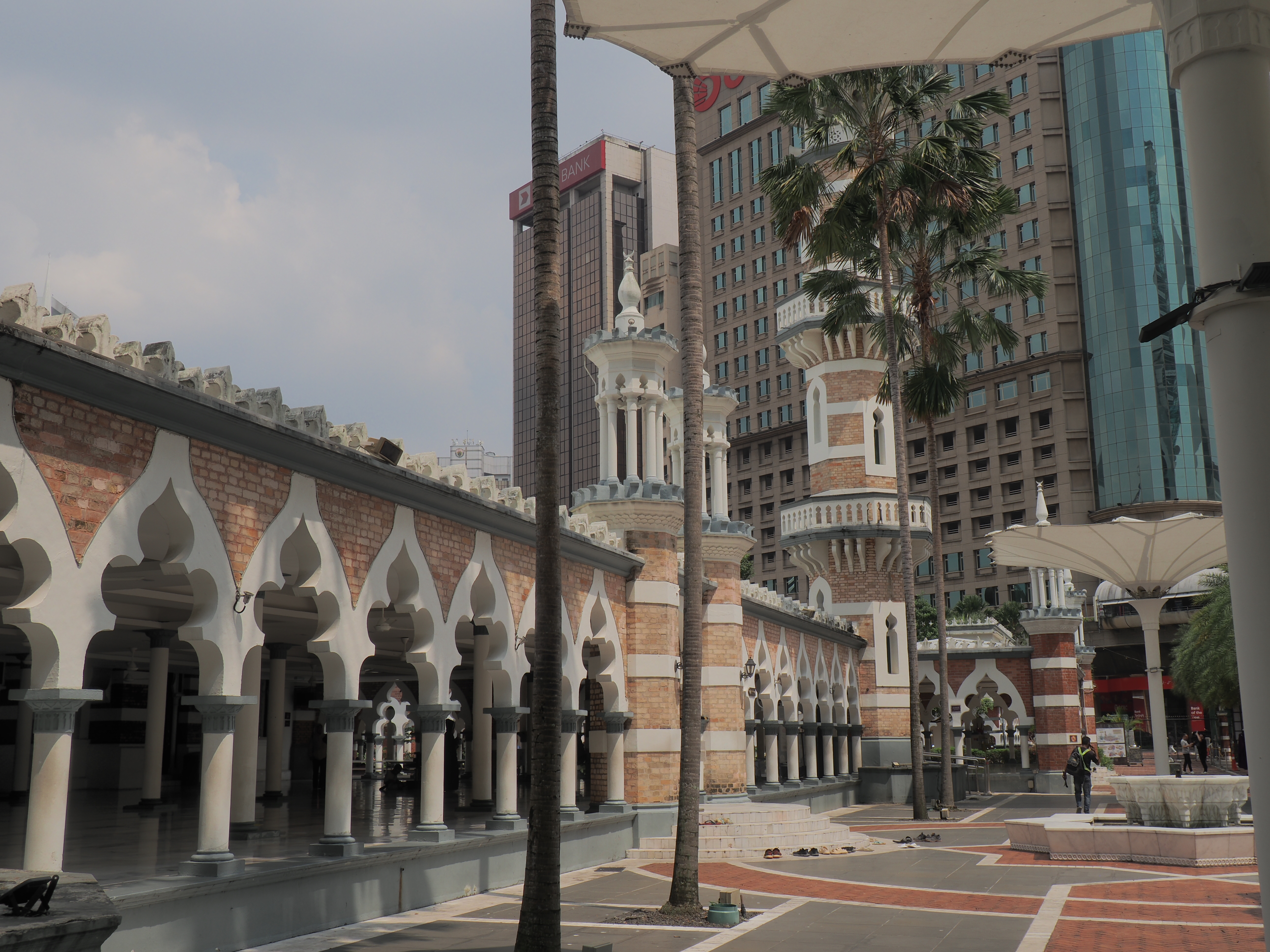

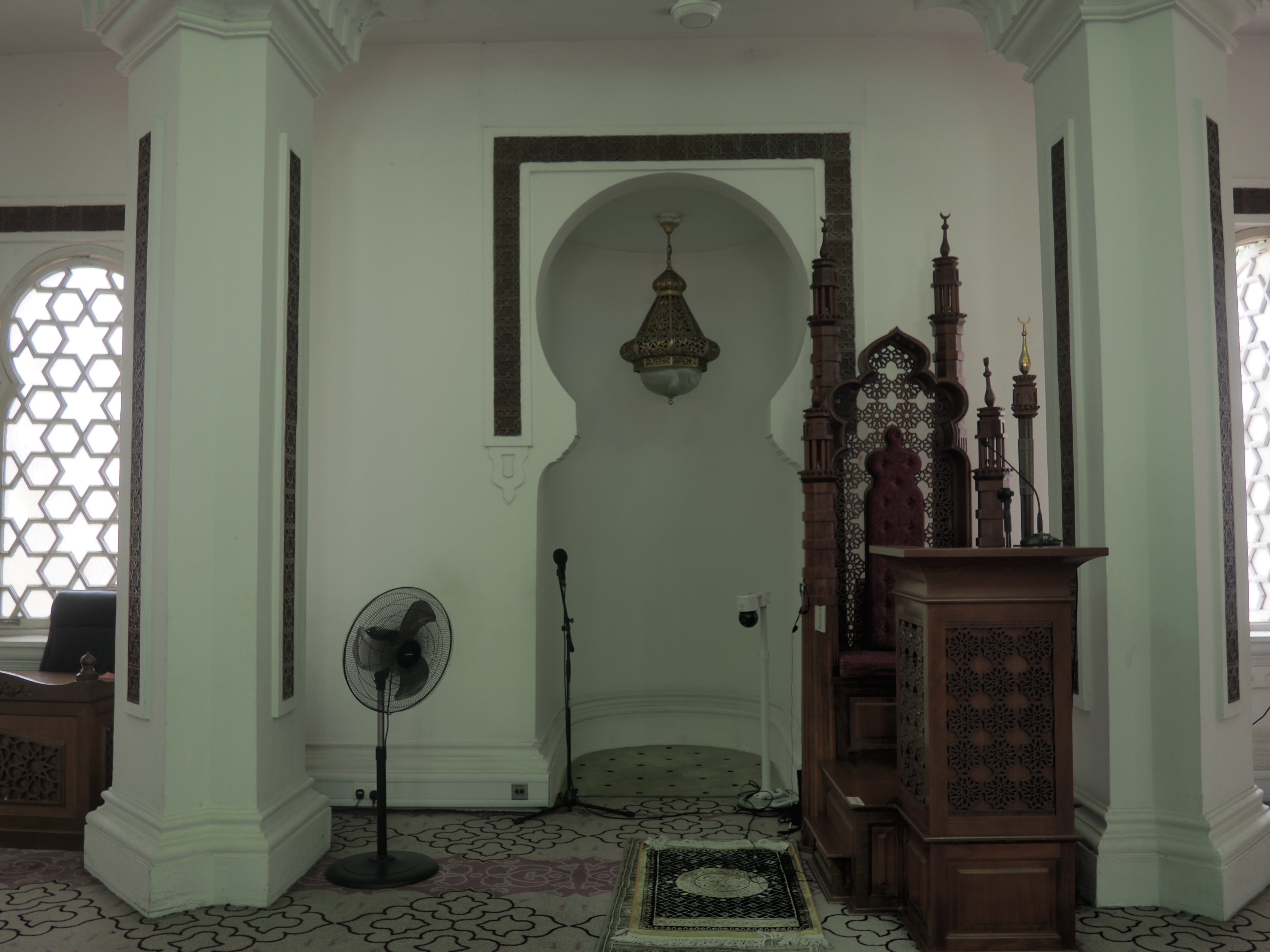
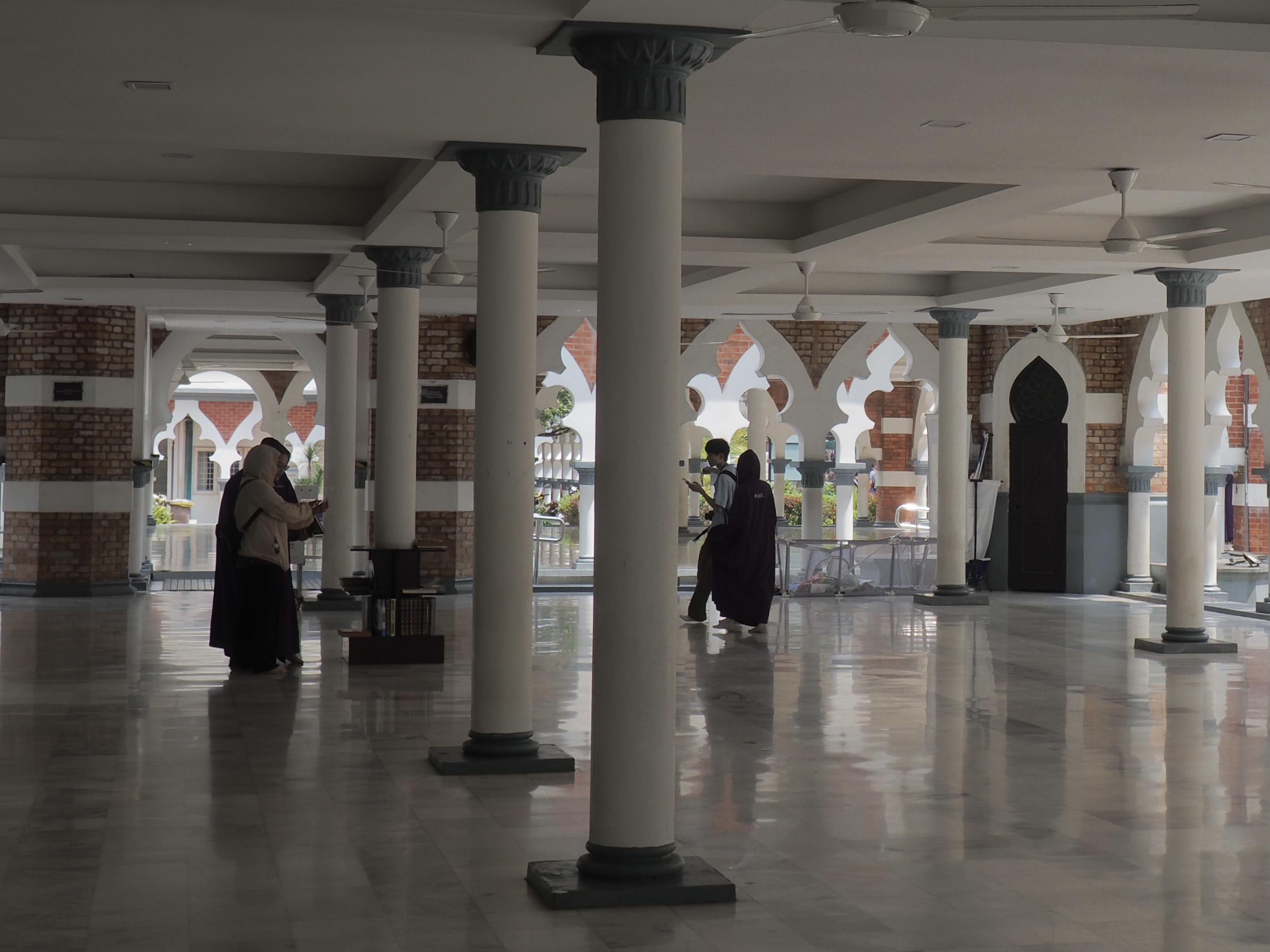
This was the main mosque of the city until 1965 when the National mosque was built. During our travels through Malaysia, whenever we entered a mosque we were welcomed warmly and provided with an overview of Islam, complete with visual aids. Attendance in the mosque is required for men each Friday; for women it is optional. Our accommodations in Malaysia consistently included a discrete arrow on the ceiling pointing west (from our current location).
national textile museum
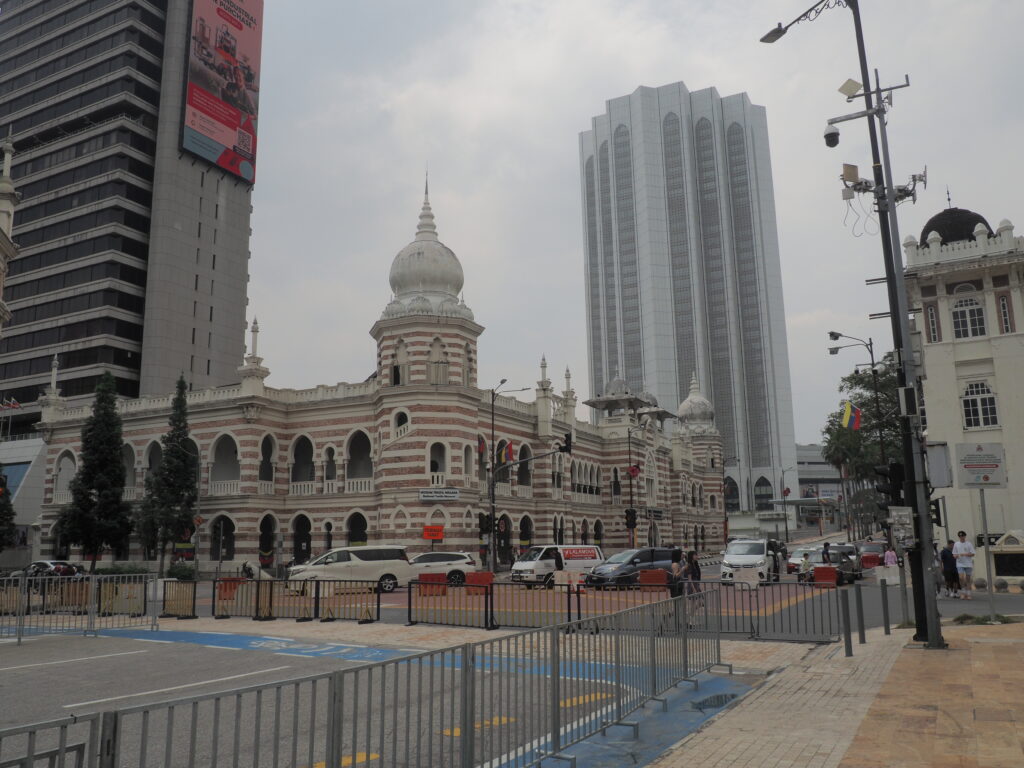
The National Textile Museum’s building was designed by the same architect who designed Jamek Mosque. The collection is interesting and well presented.
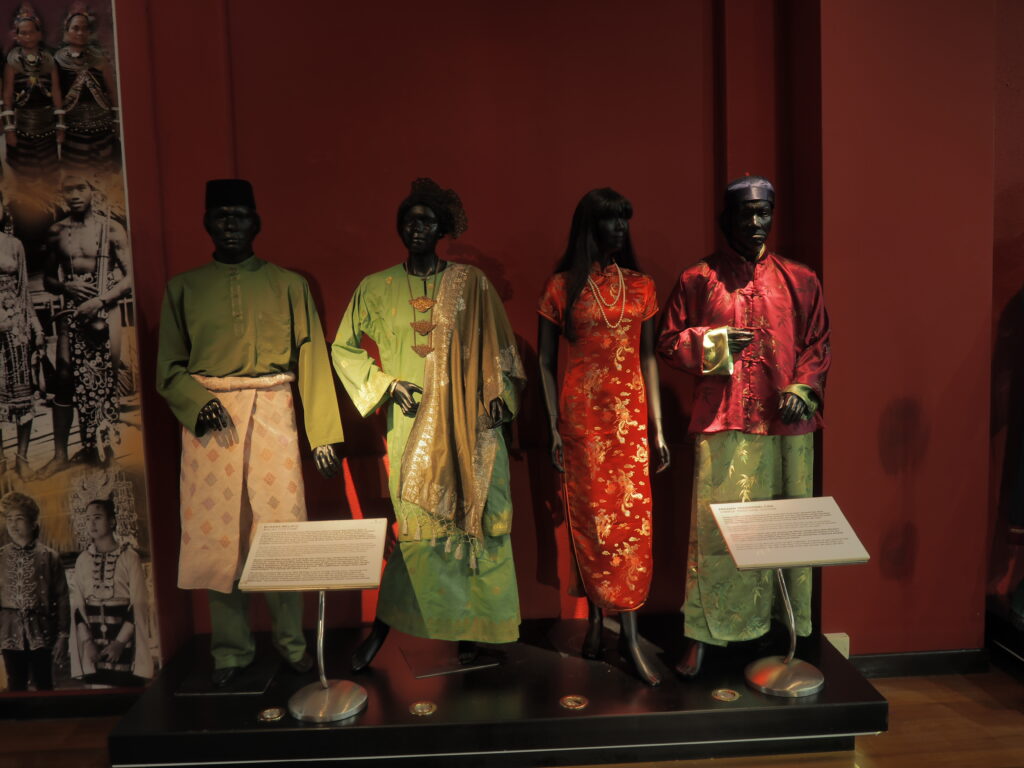
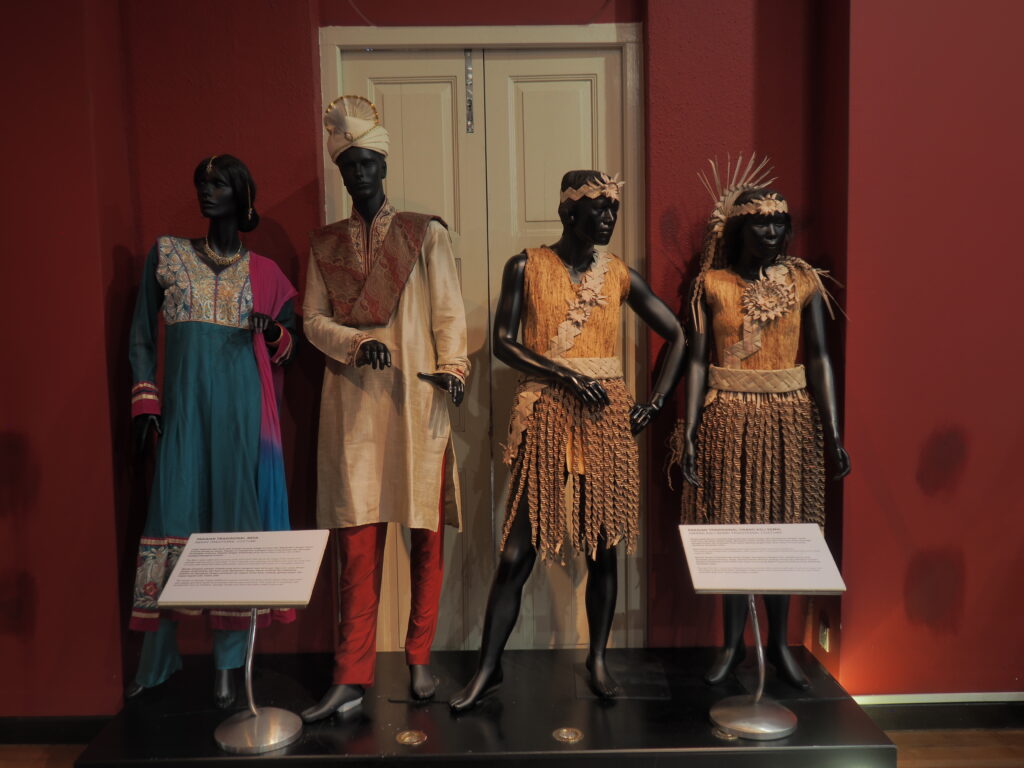
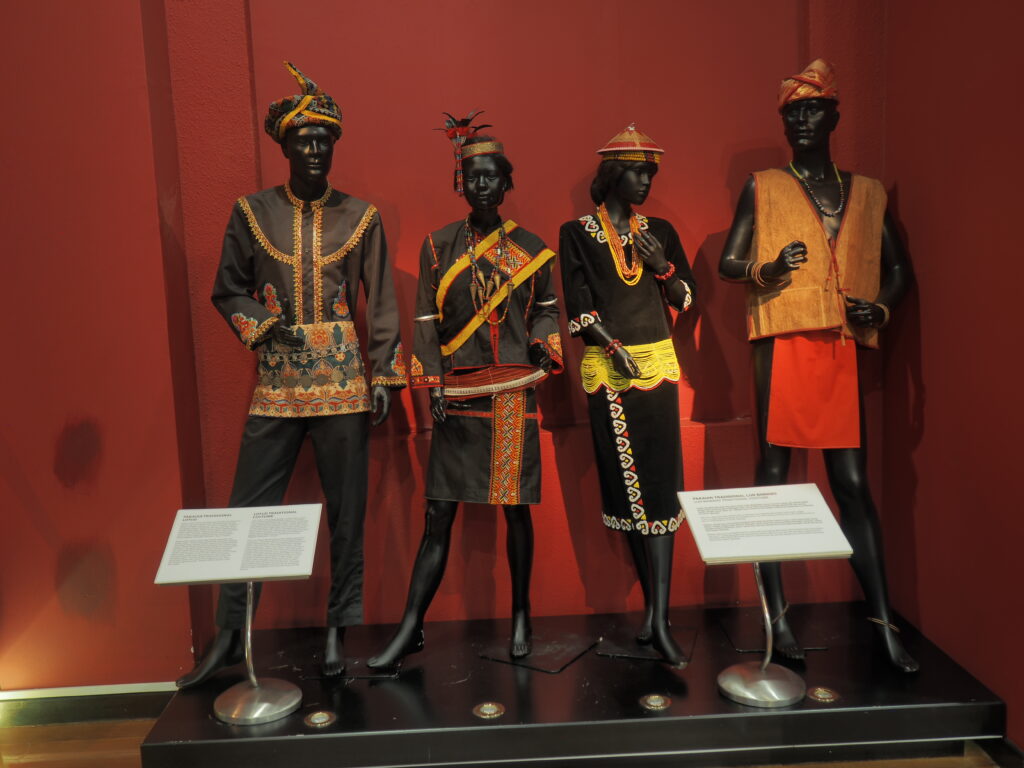
batu caves
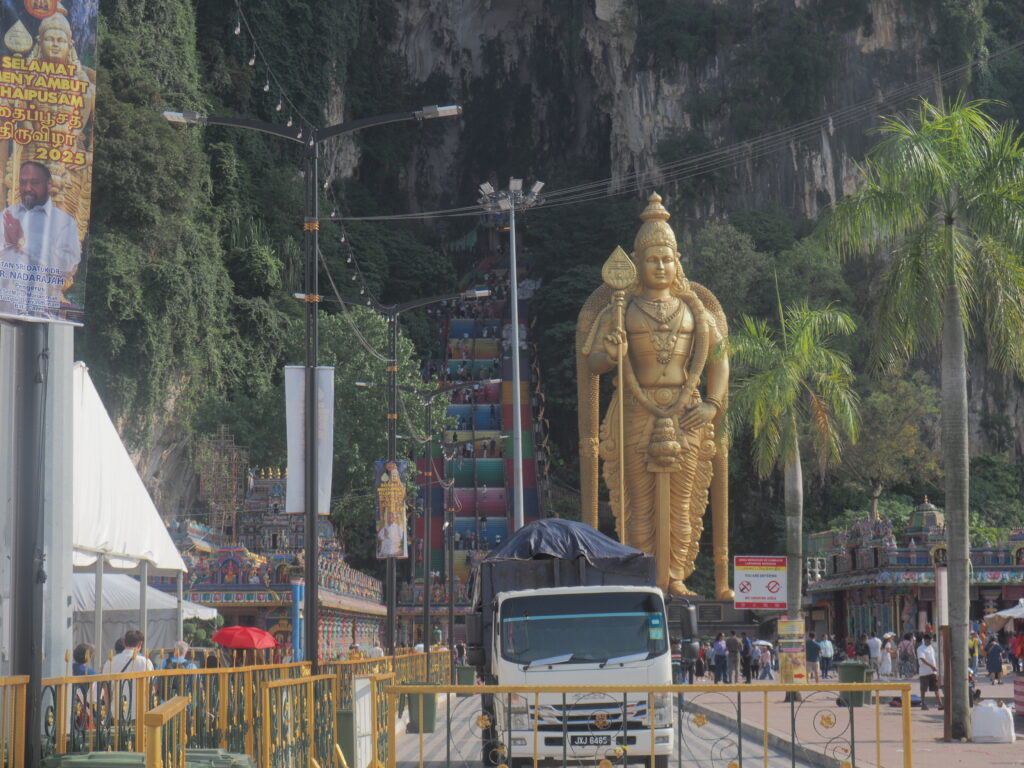
Less than ten miles north of KL, Batu Caves is a major complex of temples within a series of caves, a hike up flights of steep colorful stairs (272 in all), and a major draw for both the faithful and the curious.



It was good to have arrived in good time in the morning. This area was a mass of people later in the day as we were leaving.



The monkeys were insistent with anyone carrying food. The man climbing the stairs seemed to be well known to them.
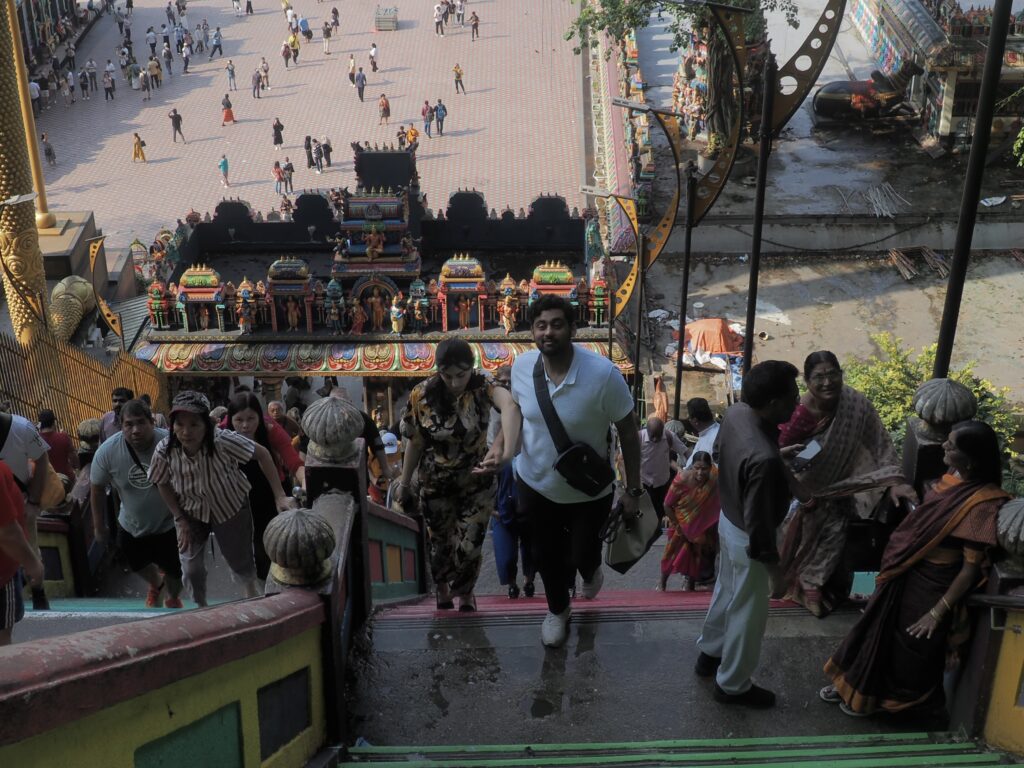
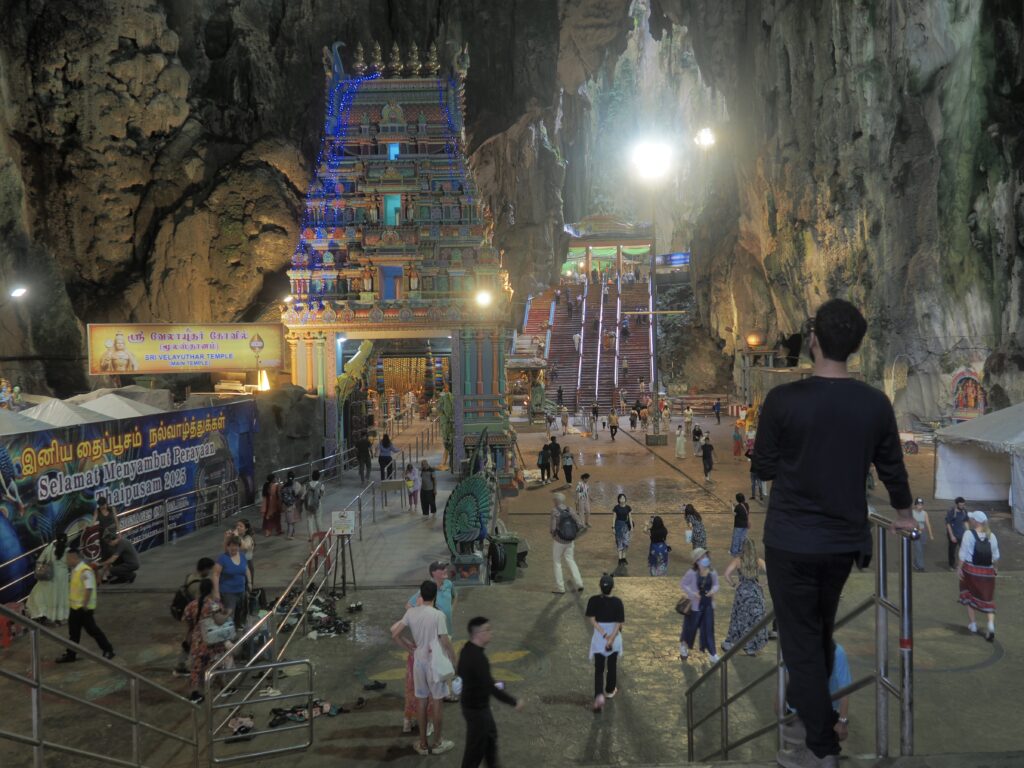
A place of awe and wonder, the temples here make the caves a pilgrimage site and the venue for festivals. We visited just a week after the Thaipusam festival when the grounds inside and out were still strewn with trash, for which our Malay driver blamed the non-locals, of course.








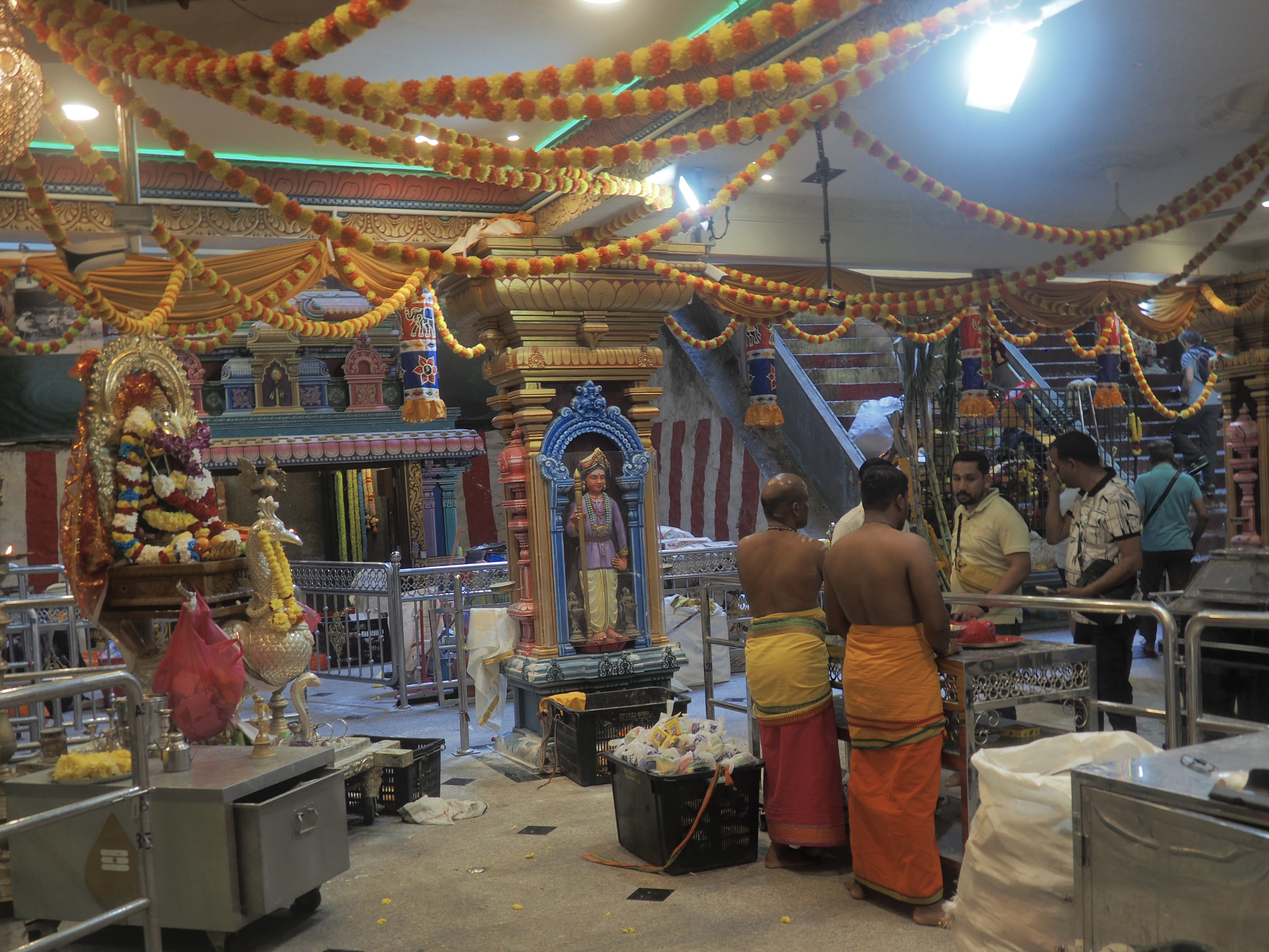

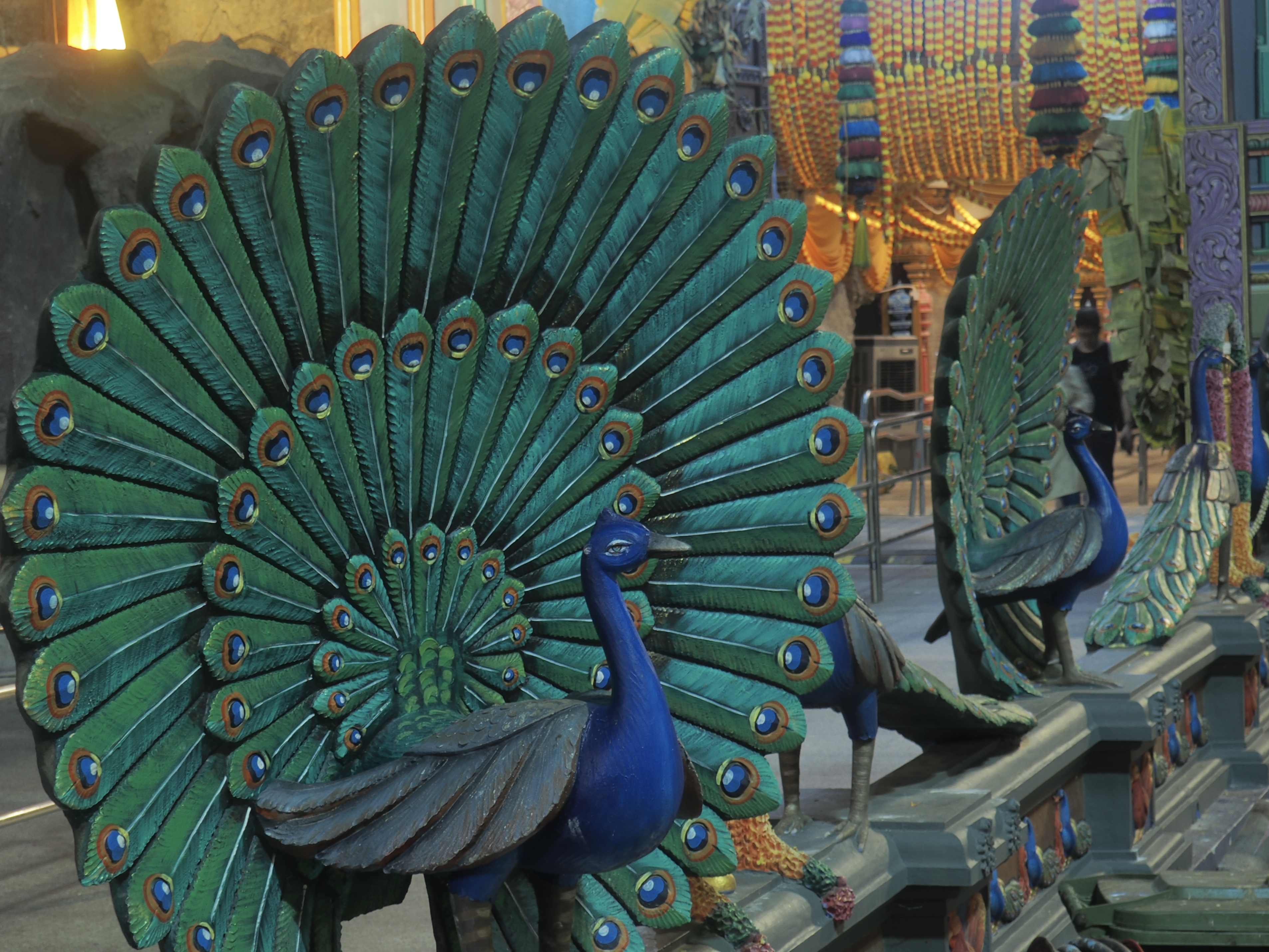


Ramayana Cave, a Questionable Choice




A short walk from Batu Caves, Ramayana Cave is a commercial venture featuring dioramas from the Ramayana inside a plastered cave. We gave it a hurried look before finding our driver and heading back into KL.
the national museum of malaysia
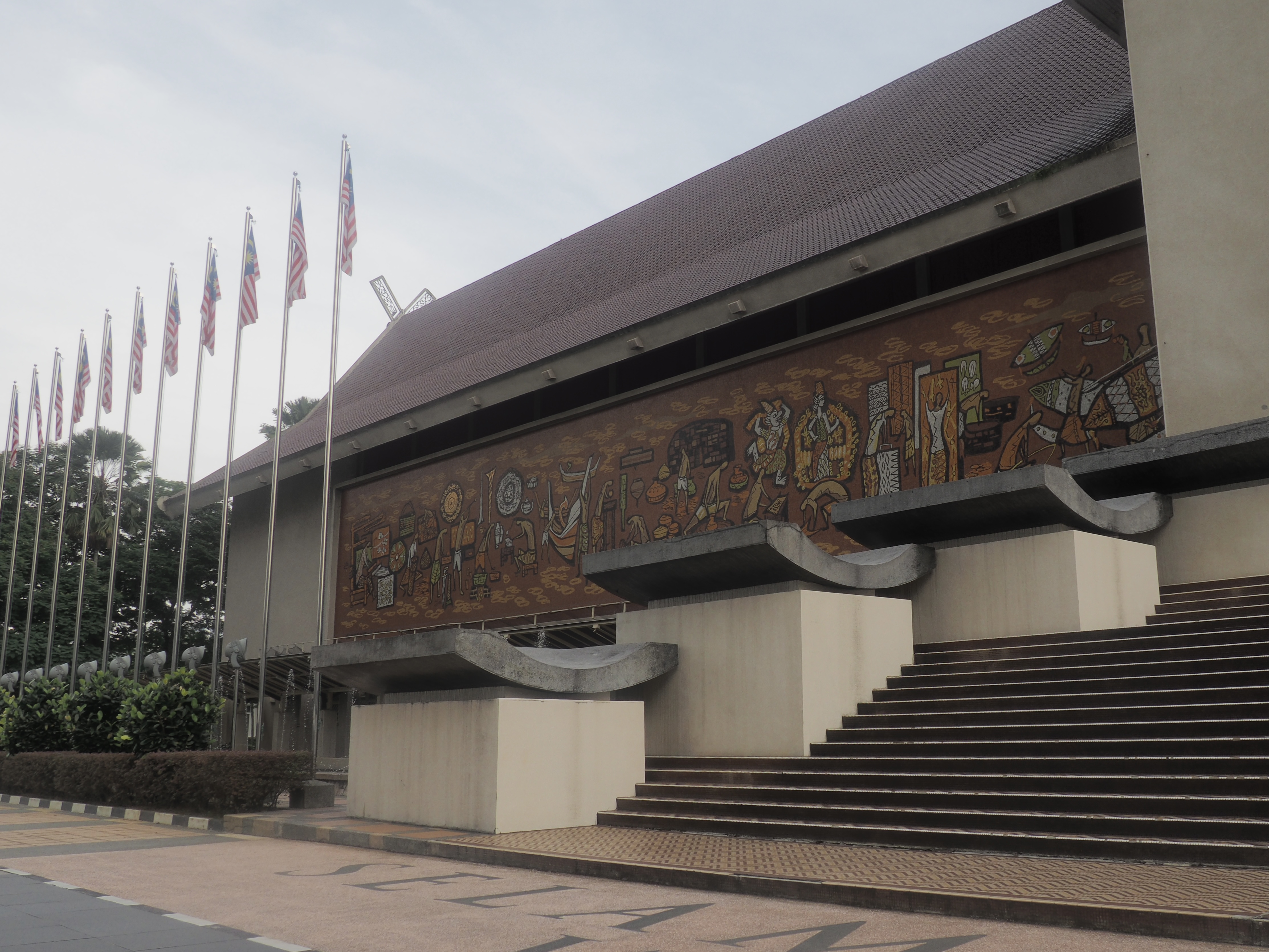
Carefully dodging tour groups, we visited the National Museum which does a credible job of covering everything from geological processes to the struggle for independence and the time since.
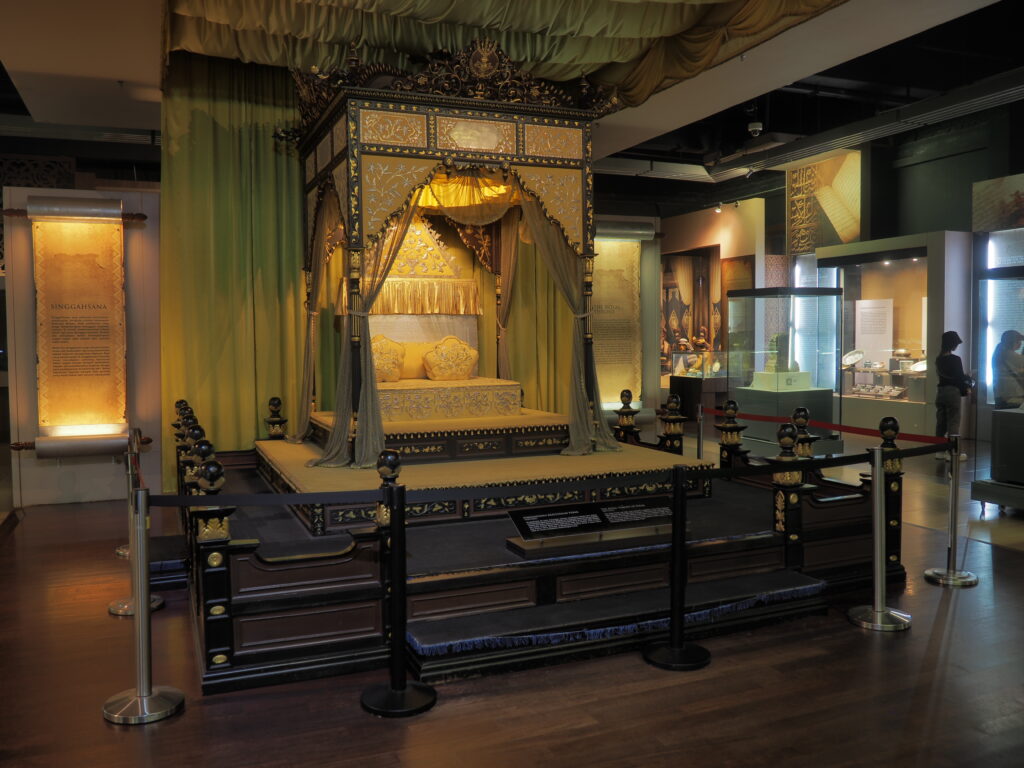
Numerous Malay kingdoms came into being, beginning in the second century, on the Malay peninsula, coastal Borneo, Sumatra, Java, Celebes, the Moluccas, other islands in modern Indonesia and the Philippines, and also parts of Indochina (Funan and Champa), the Malays being in origin a maritime trading people. More recently, from the 15th century, their identity was greatly transformed by the influence of the most prominent of those kingdoms, the Sultanate of Melaka (Malacca) and conversion to Islam which began in Melaka. The formation of Malaysia as a country required the assent of these hereditary rulers who still retain certain privileges. The nine hereditary rulers (a Raja and a lot of Sultans) elect the Malaysian Head of State from among themselves every five years, contributing to the greatest complexity we’ve encountered in trying to understand how a country is governed.
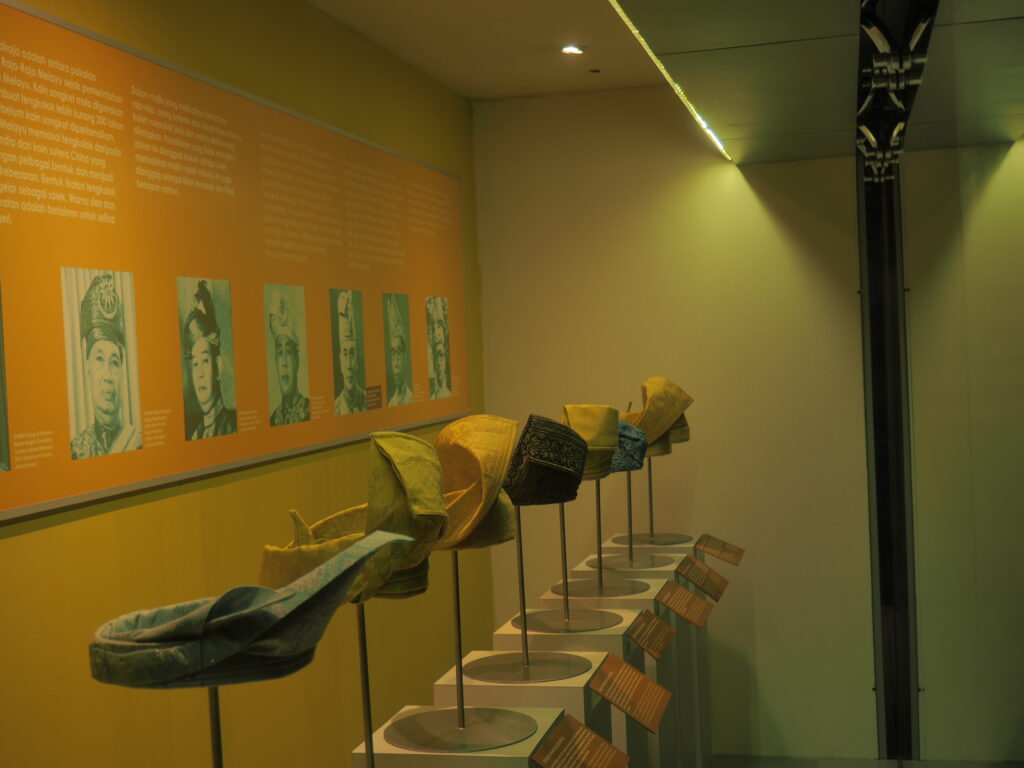
The most important component of Malay national dress is the tengkolok, which is not only a headdress, but a symbol of its wearer’s social status through the use of shape, color, pattern and fabric, varying even by function and event. It is created by folding an individual piece of fabric.

Not a piece of street art, this bicycle is a reminder of the rapid overrunning of Malaysia by the Japanese in WWII – by bicycle. The British were never forgiven for their refusal to believe the country could be taken and their rapid abandonment of any defense while they piled onto departing ships, leaving the country to a traumatic occupation, especially for the Chinese minority.
islamic art museum malaysia
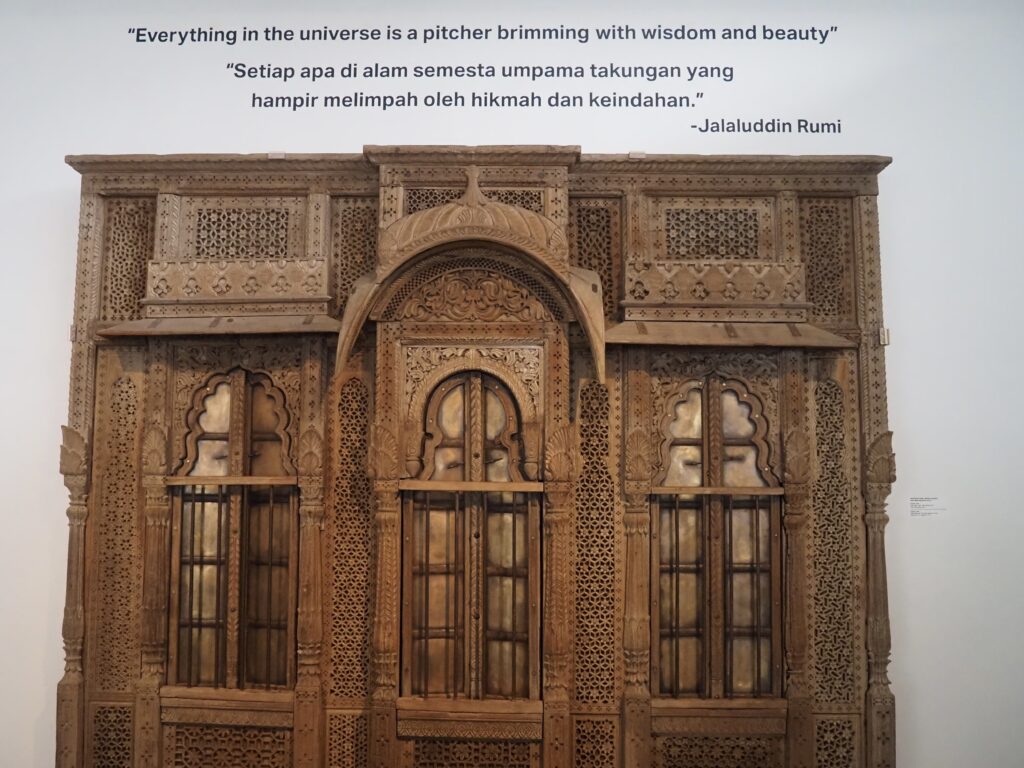
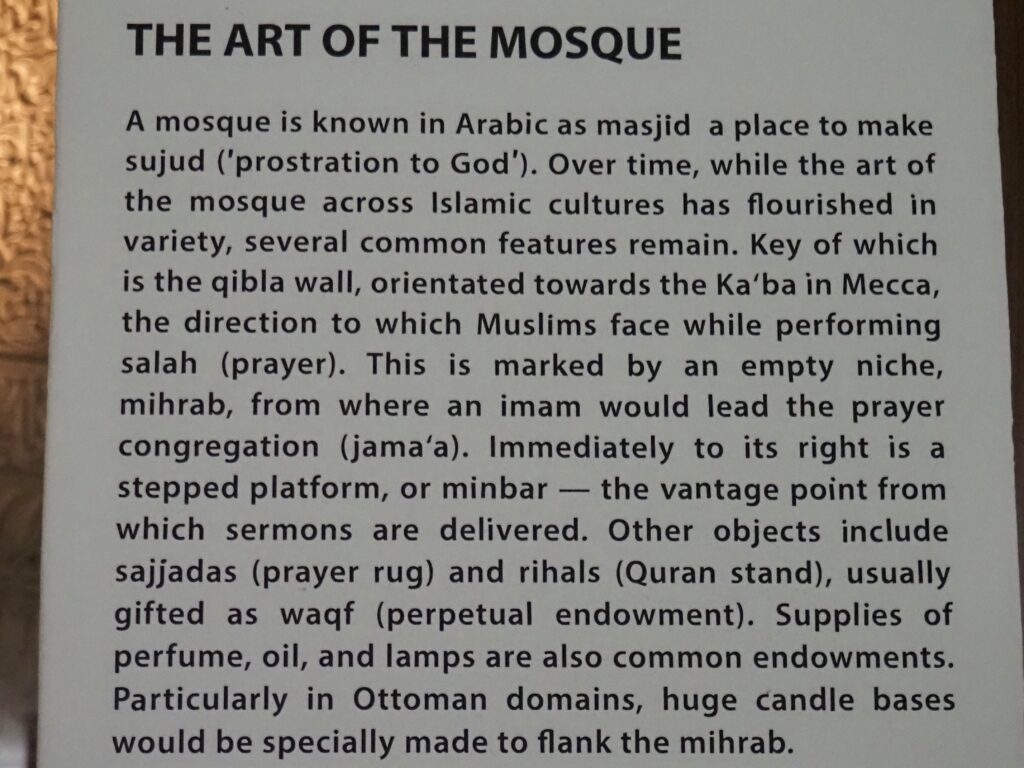
A picture may be worth a thousand words, but sometimes words must do when your humble photographer is at a loss to capture the essence of what we’ve experienced. A sizable room in this superb museum is dedicated to large models in plexiglass cases of perhaps twenty mosques from around the world (including New Mexico) with descriptions of their architecture. They are surprisingly evocative. Some we had visited, many we had not. As you may know, mosques are considerably less splashy than Hindu, Buddhist, Taoist, and many Christian places of worship.
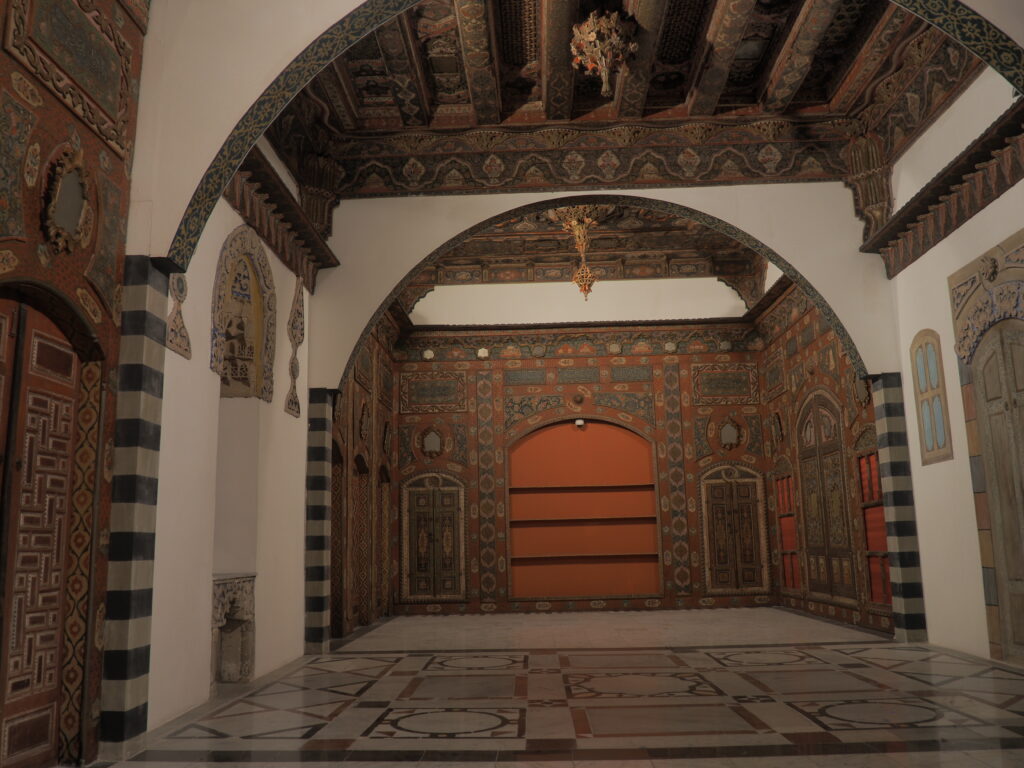
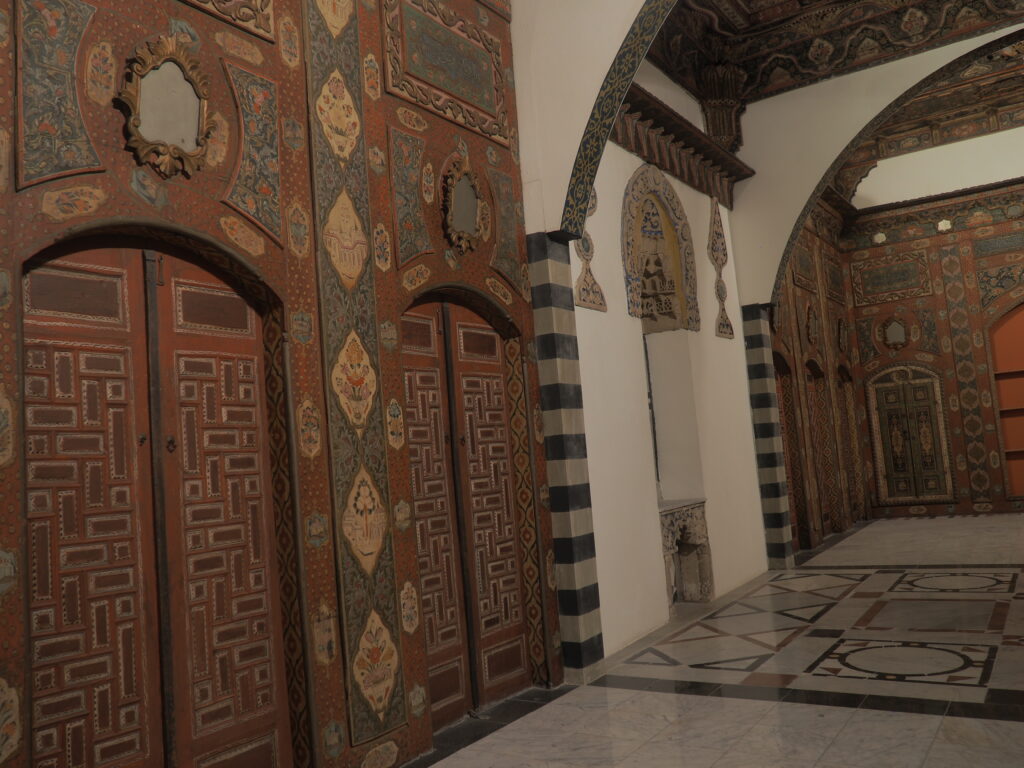
This late Ottoman period (1820) reception room is from Damascus. Divided in thirds, the areas closest and furthest from the camera are where guests would be received. The built in cupboards and closets would store carpets and pillows when not in use.
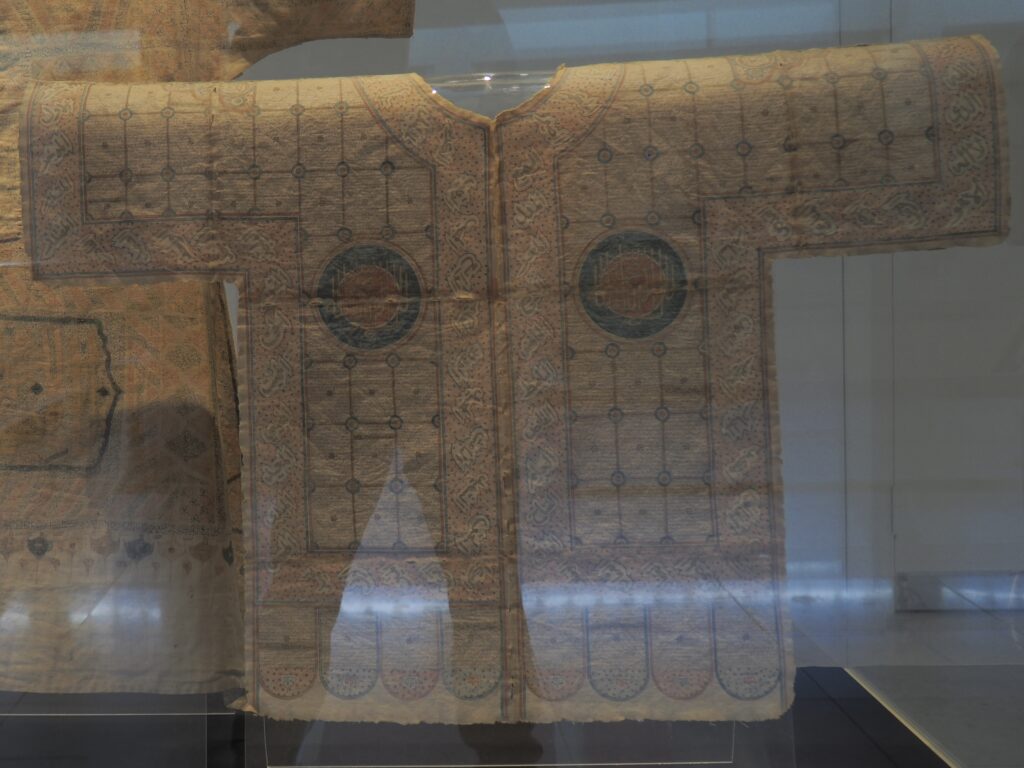
“Talismanic shirts made of cotton or linen were part of a soldier’s attire to provide psychological and spiritual protection. They were worn underneath protective metal armour in parts of the Muslim world. This light shirt bears inscriptions and symbols, including Qur’anic verses, the ninety-nine beautiful names of Allah, and talismanic magic squares.”


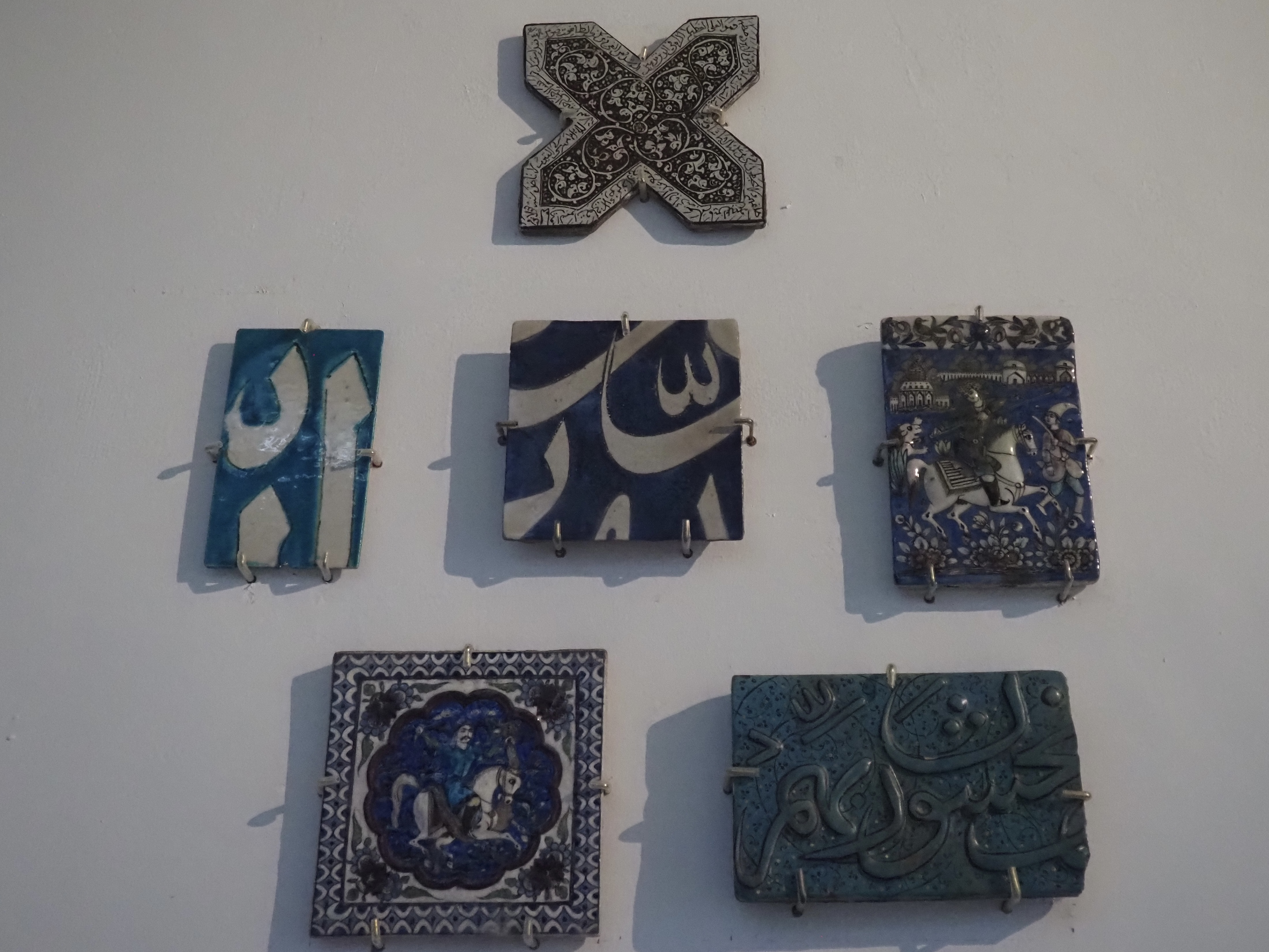

and now . . . The food!
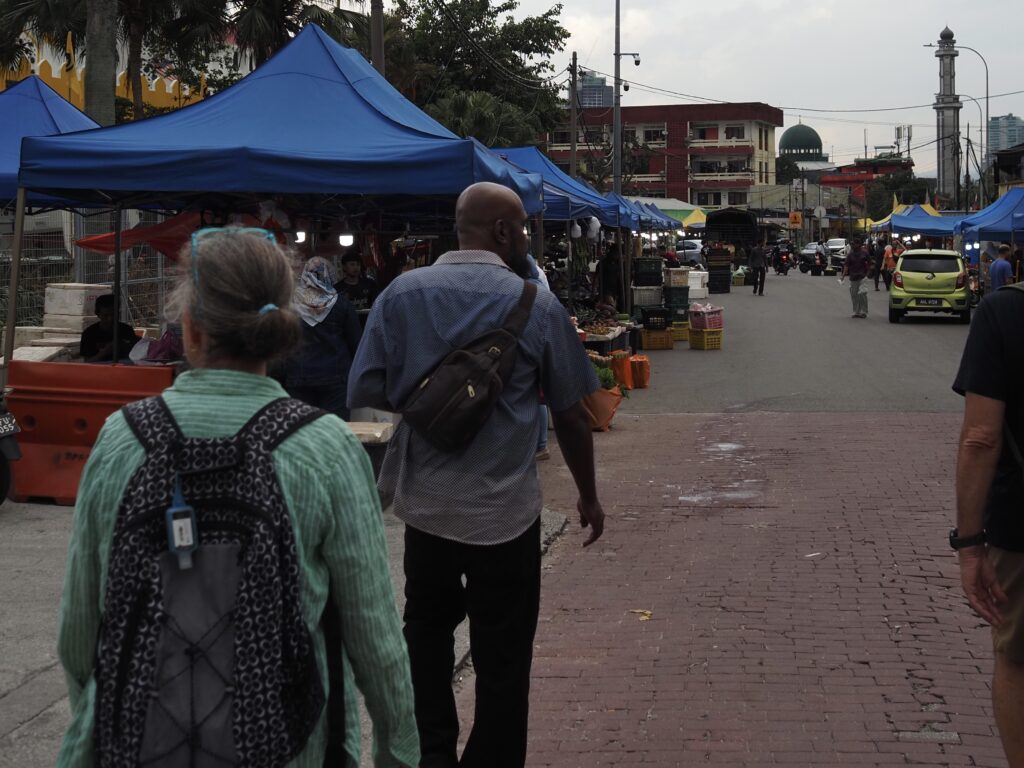
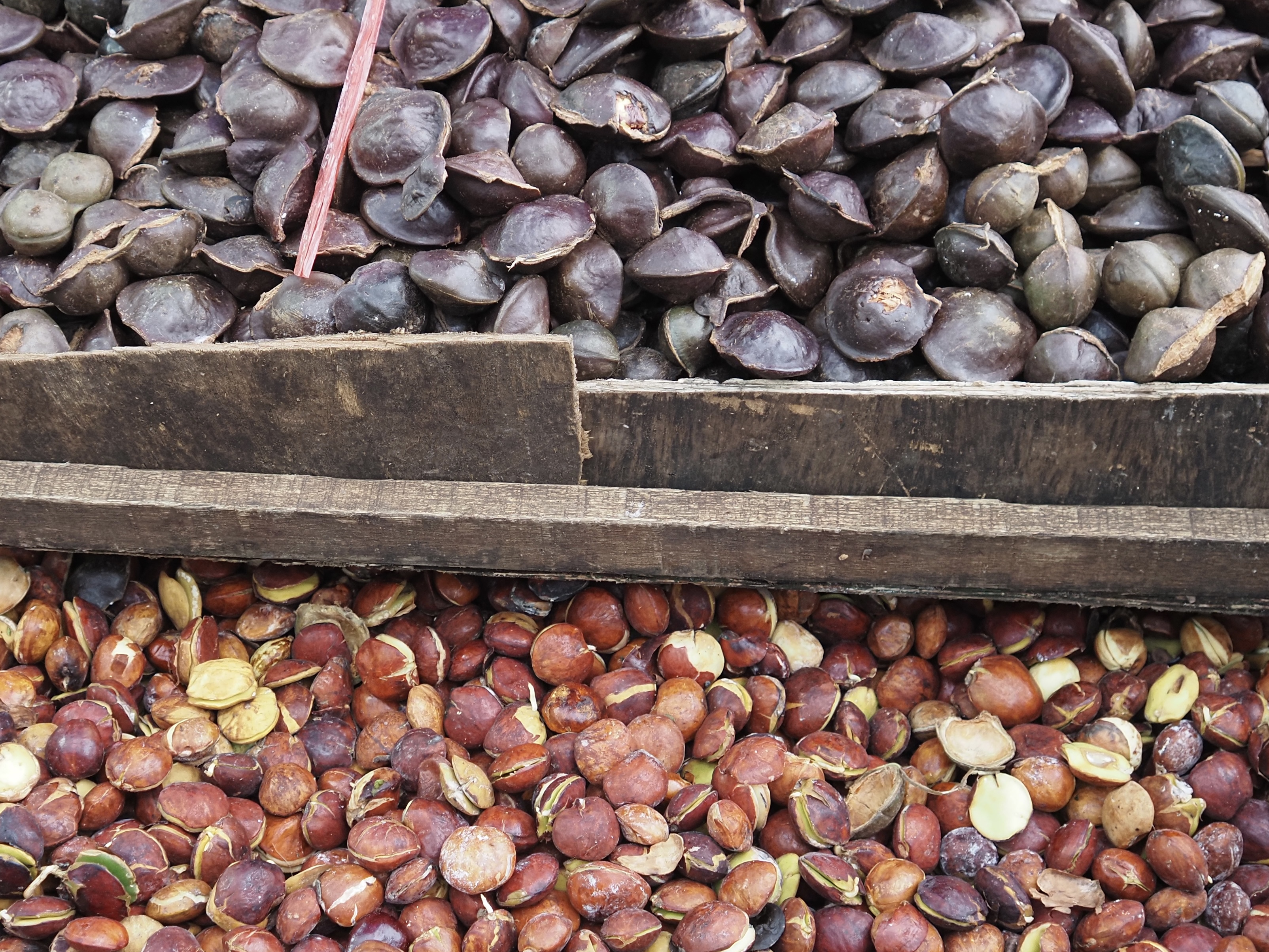



On our way through, a market is the best place to start recognizing unfamiliar produce. There’s an unshelled and shelled black bean used to make a tonic, a green bean used to help along certain bodily functions, ginger flowers and banana flowers.
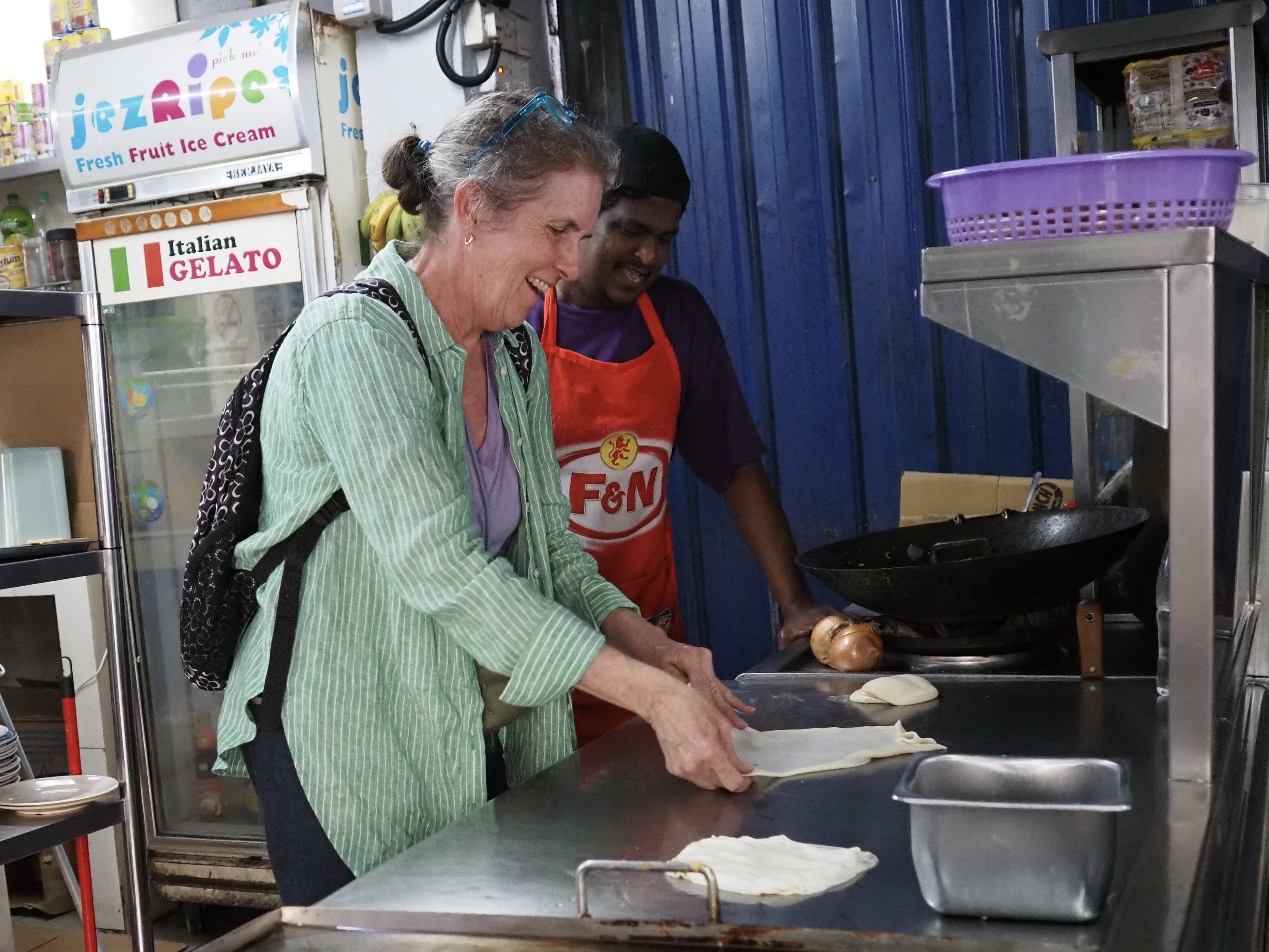


At our first stop for something to eat, learning a new skill on the fly.




This is serious food.
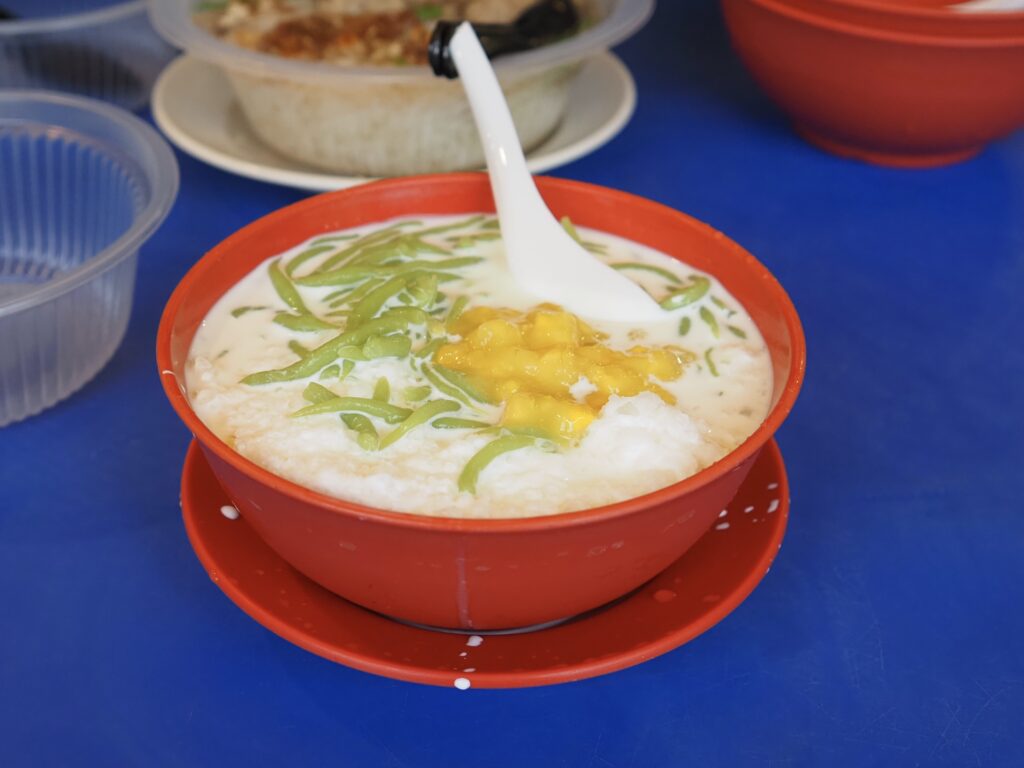



We wander into a foodie neighborhood that certainly looks fated for development.



That’s nasi lemak, the national dish, served in a banana leaf to impart a bit of flavor, complete with peanuts and the least fishy tasting anchovies we’ve ever encountered (genuinely enjoyable and from some island we’d never heard of, of course). Upper right is rendang chicken, lower right . . . all delicious.


More cooking in banana leaf, this time a fish paste.


Finally, some fried bananas . . .



. . . as the night settles in . . .




. . . we take the elevator up to the pedestrian bridge and cross over the highway, making our way in the pleasant temperatures of the evening to our hotel next door to the Petronas Towers where we had enjoyed a Valentines concert with the Kuala Lumpur Symphony Orchestra a few nights before.
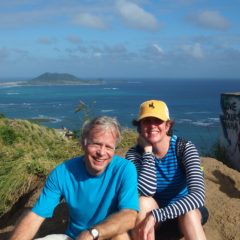

Turns out I’m over seven feet tall… if you measure me reaching as high as I can with one arm…